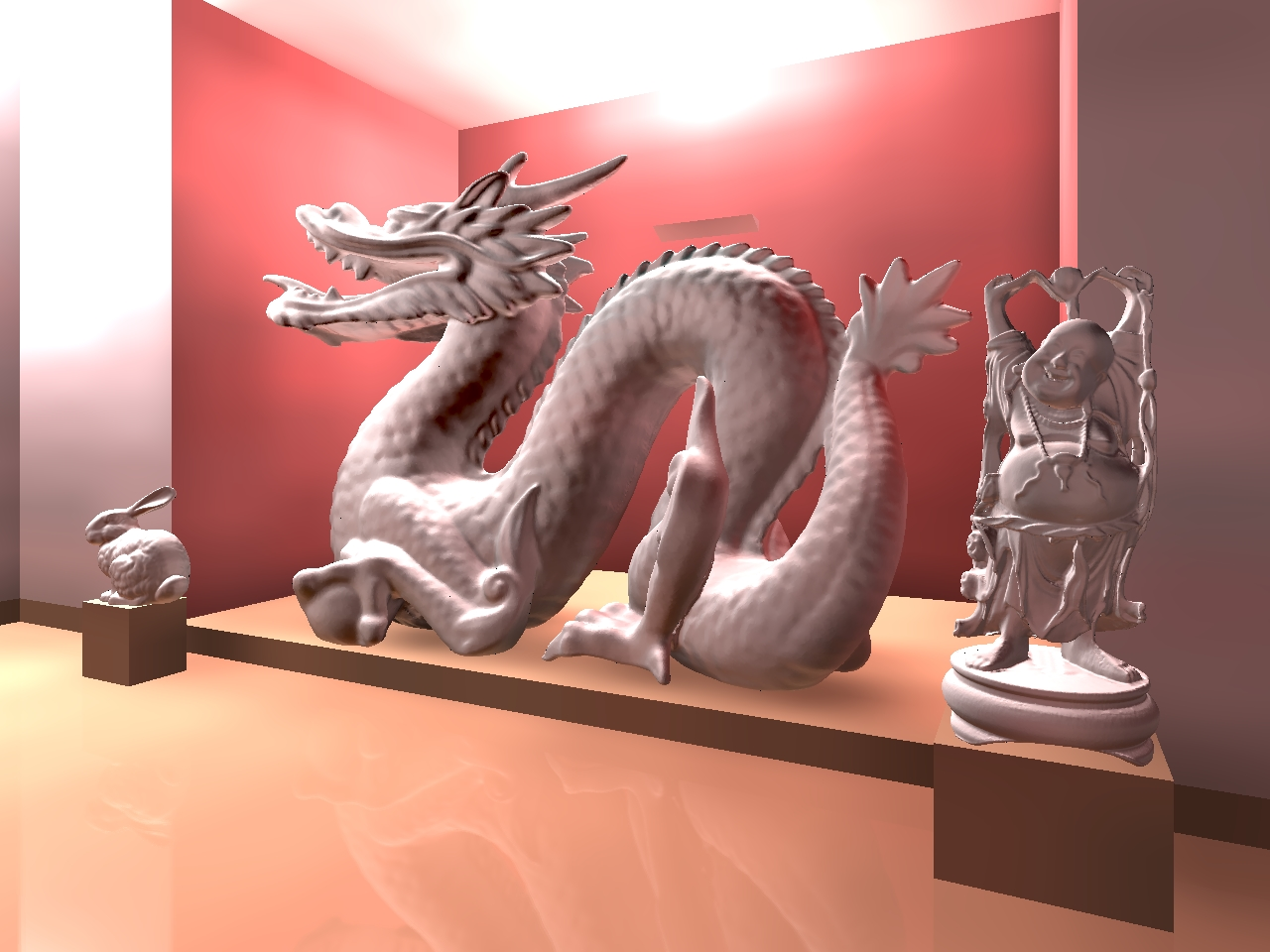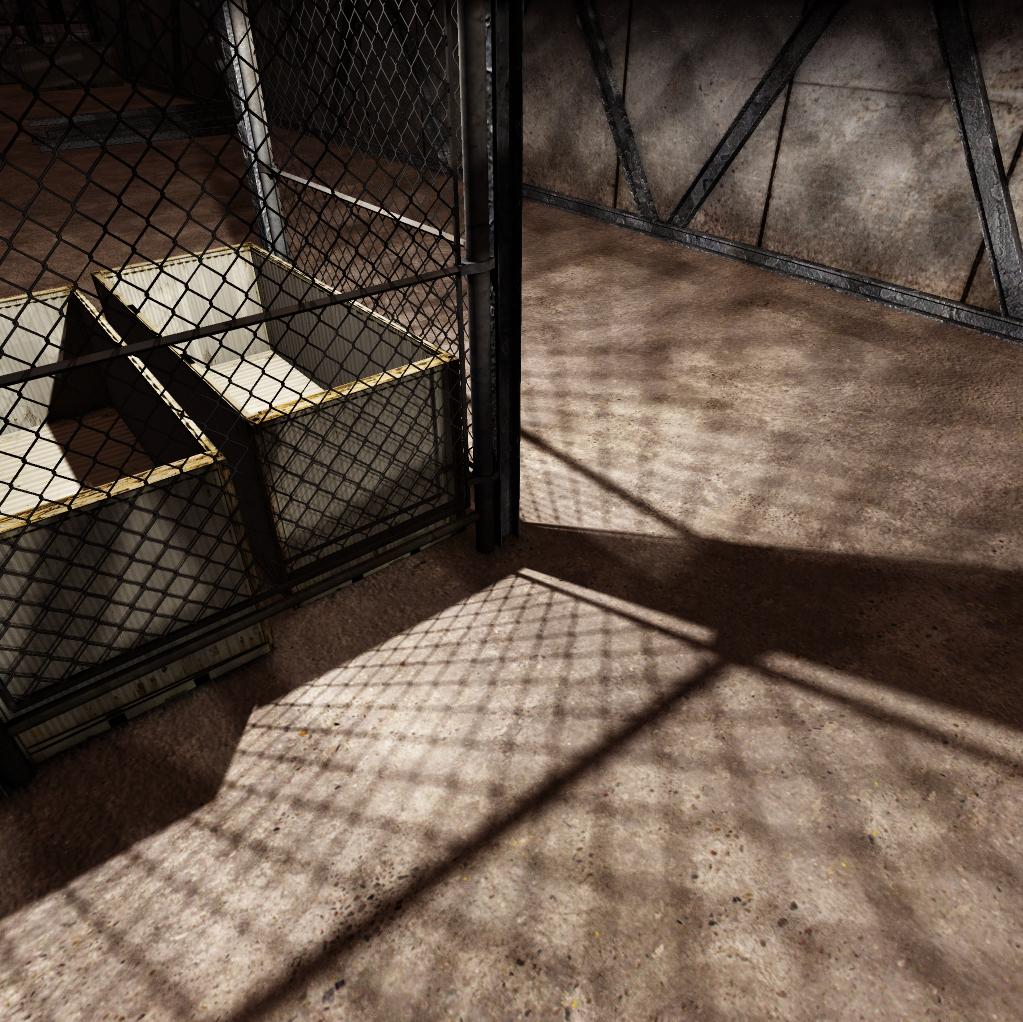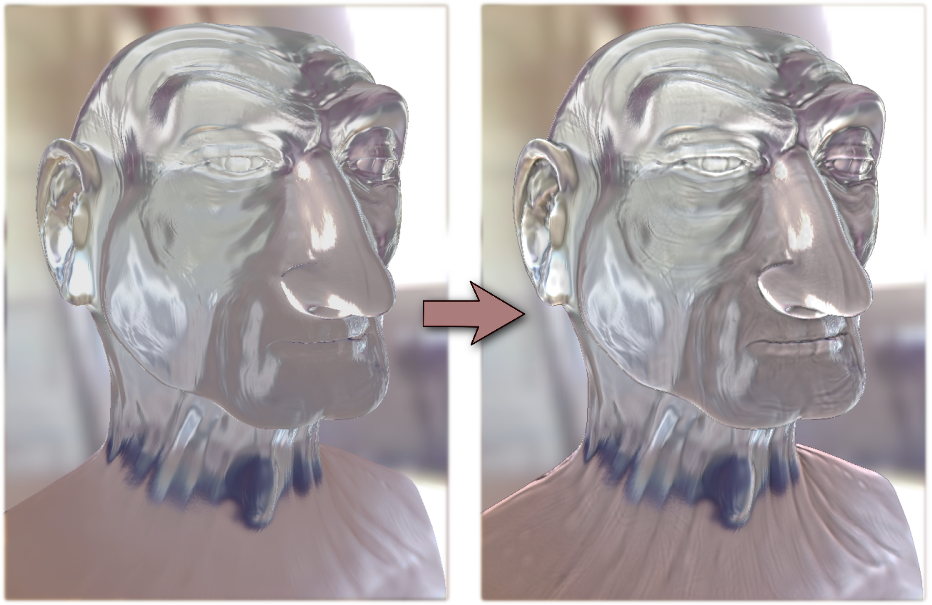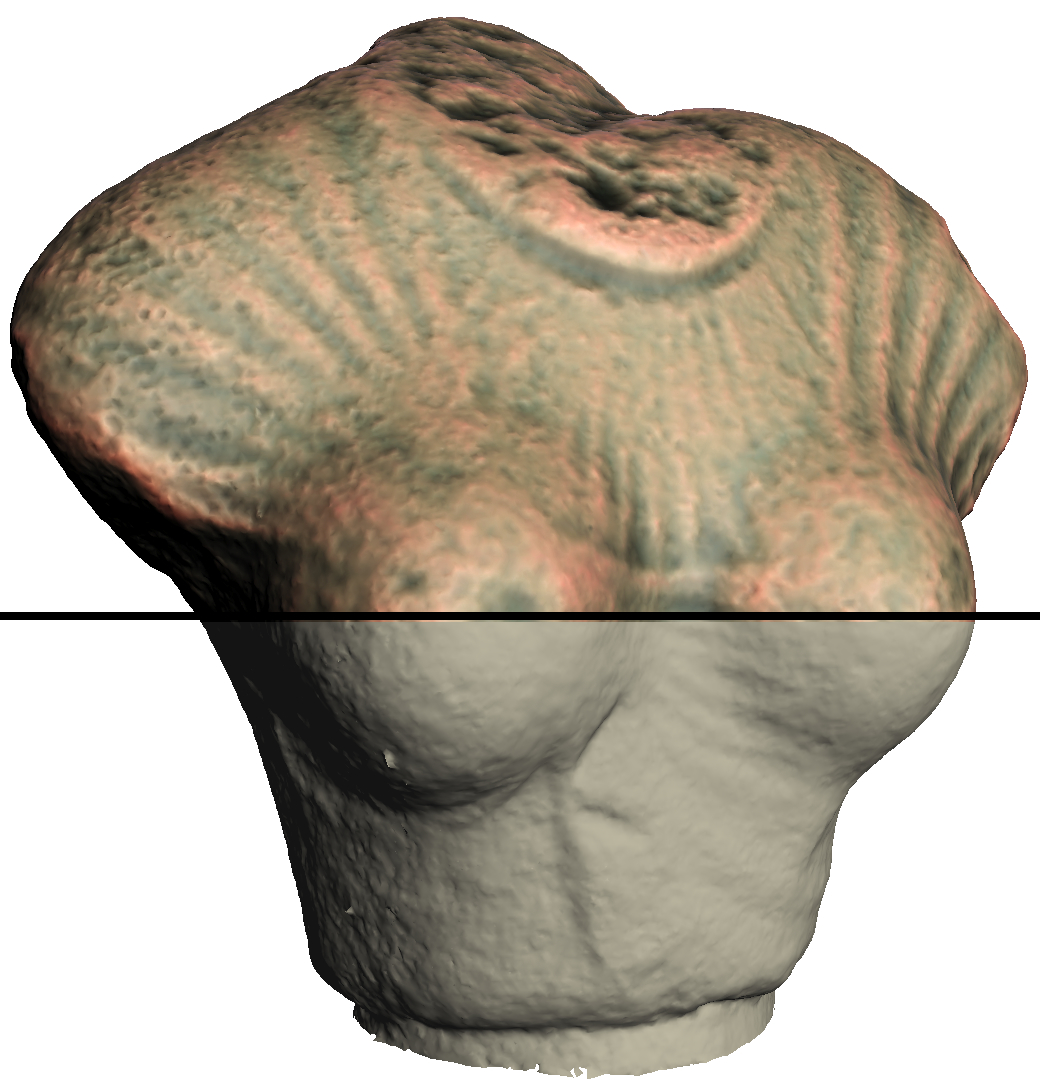2024Activity reportProject-TeamMANAO
RNSR: 201221025F- Research center Inria Centre at the University of Bordeaux
- In partnership with:Université de Bordeaux, CNRS
- Team name: Melting the frontiers between Light, Shape and Matter
- In collaboration with:Laboratoire Bordelais de Recherche en Informatique (LaBRI)
- Domain:Perception, Cognition and Interaction
- Theme:Interaction and visualization
Keywords
Computer Science and Digital Science
- A5. Interaction, multimedia and robotics
- A5.1.1. Engineering of interactive systems
- A5.1.6. Tangible interfaces
- A5.3.5. Computational photography
- A5.4. Computer vision
- A5.4.4. 3D and spatio-temporal reconstruction
- A5.5. Computer graphics
- A5.5.1. Geometrical modeling
- A5.5.2. Rendering
- A5.5.3. Computational photography
- A5.5.4. Animation
- A5.6. Virtual reality, augmented reality
- A6.2.3. Probabilistic methods
- A6.2.5. Numerical Linear Algebra
- A6.2.6. Optimization
- A6.2.8. Computational geometry and meshes
Other Research Topics and Application Domains
- B3.1. Sustainable development
- B3.1.1. Resource management
- B3.6. Ecology
- B5. Industry of the future
- B5.1. Factory of the future
- B9. Society and Knowledge
- B9.2. Art
- B9.2.2. Cinema, Television
- B9.2.3. Video games
- B9.6. Humanities
- B9.6.1. Psychology
- B9.6.6. Archeology, History
- B9.6.10. Digital humanities
1 Team members, visitors, external collaborators
Research Scientists
- Pascal Barla [Team leader, INRIA, Researcher]
- Gael Guennebaud [INRIA, Researcher]
- Romain Pacanowski [INRIA, Researcher]
Faculty Members
- Jean Basset [UNIV BORDEAUX, Associate Professor, from Sep 2024]
- Pierre Benard [UNIV BORDEAUX, Associate Professor]
- Patrick Reuter [UNIV BORDEAUX, Associate Professor]
Post-Doctoral Fellows
- Jean Basset [INRIA, Post-Doctoral Fellow, until Aug 2024]
- Corentin Cou [INRIA, from Mar 2024 until Apr 2024]
- Pierre Mezieres [INRIA, Post-Doctoral Fellow]
PhD Students
- Julien Castets [UNIV BORDEAUX, from Mar 2024]
- Melvin Even [INRIA]
- Louis Forestier [CNRS, from Sep 2024]
- Gary Fourneau [INRIA, from Dec 2024]
- Gary Fourneau [INRIA, until Oct 2024]
- Pierre La Rocca [UNIV BORDEAUX]
- Simon Lucas [INRIA, from Oct 2024 until Oct 2024]
- Simon Lucas [UNIV BORDEAUX, until Sep 2024]
- Lea Marquet [INRIA]
- Bastien Morel [UNIV BORDEAUX, from Oct 2024]
- Panagiotis Tsiapkolis [UBISOFT, CIFRE]
Technical Staff
- Louis De Oliveira [INRIA, Engineer, from Sep 2024]
- Jeremie Ettedgui [INRIA, Engineer, from May 2024]
Interns and Apprentices
- Yanis Dubois [UNIV BORDEAUX, Intern, from May 2024 until Sep 2024]
- Clement Feytout [UNIV BORDEAUX, Intern, from May 2024 until Jun 2024]
- Christina Jeandes [INRIA, Intern, from May 2024 until Aug 2024]
- Bastien Morel [UNIV BORDEAUX, Intern, from Apr 2024 until Sep 2024]
- Matthieu Nass [UNIV BORDEAUX, Intern, from May 2024 until Sep 2024]
- Karina-Viviana Roman [UNIV BORDEAUX, Intern, from May 2024 until Aug 2024]
- Marwane Youssoufi [INRIA, Intern, from Nov 2024]
Administrative Assistants
- Anne-Laure Gautier [INRIA]
- Marie-Melissandre Roy [INRIA, from Nov 2024]
External Collaborators
- Aurelie Bugeau [UNIV BORDEAUX, until Jun 2024]
- Xavier Granier [Institut d'Optique]
2 Overall objectives
2.1 General Introduction
Computer generated images are ubiquitous in our everyday life. Such images are the result of a process that has seldom changed over the years: the optical phenomena due to the propagation of light in a 3D environment are simulated taking into account how light is scattered 63, 39 according to shape and material characteristics of objects. The intersection of optics (for the underlying laws of physics) and computer science (for its modeling and computational efficiency aspects) provides a unique opportunity to tighten the links between these domains in order to first improve the image generation process (computer graphics, optics and virtual reality) and next to develop new acquisition and display technologies (optics, mixed reality and machine vision).
Most of the time, light, shape, and matter properties are studied, acquired, and modeled separately, relying on realistic or stylized rendering processes to combine them in order to create final pixel colors. Such modularity, inherited from classical physics, has the practical advantage of permitting to reuse the same models in various contexts. However, independent developments lead to un-optimized pipelines and difficult-to-control solutions since it is often not clear which part of the expected result is caused by which property. Indeed, the most efficient solutions are most often the ones that blur the frontiers between light, shape, and matter to lead to specialized and optimized pipelines, as in real-time applications (like Bidirectional Texture Functions 74 and Light-Field rendering 37). Keeping these three properties separated may lead to other problems. For instance:
- Measured materials are too detailed to be usable in rendering systems and data reduction techniques have to be developed 73, 75, leading to an inefficient transfer between real and digital worlds;
- It is currently extremely challenging (if not impossible) to directly control or manipulate the interactions between light, shape, and matter. Accurate lighting processes may create solutions that do not fulfill users' expectations;
- Artists can spend hours and days in modeling highly complex surfaces whose details will not be visible 95 due to inappropriate use of certain light sources or reflection properties.
Most traditional applications target human observers. Depending on how deep we take into account the specificity of each user, the requirement of representations, and algorithms may differ.
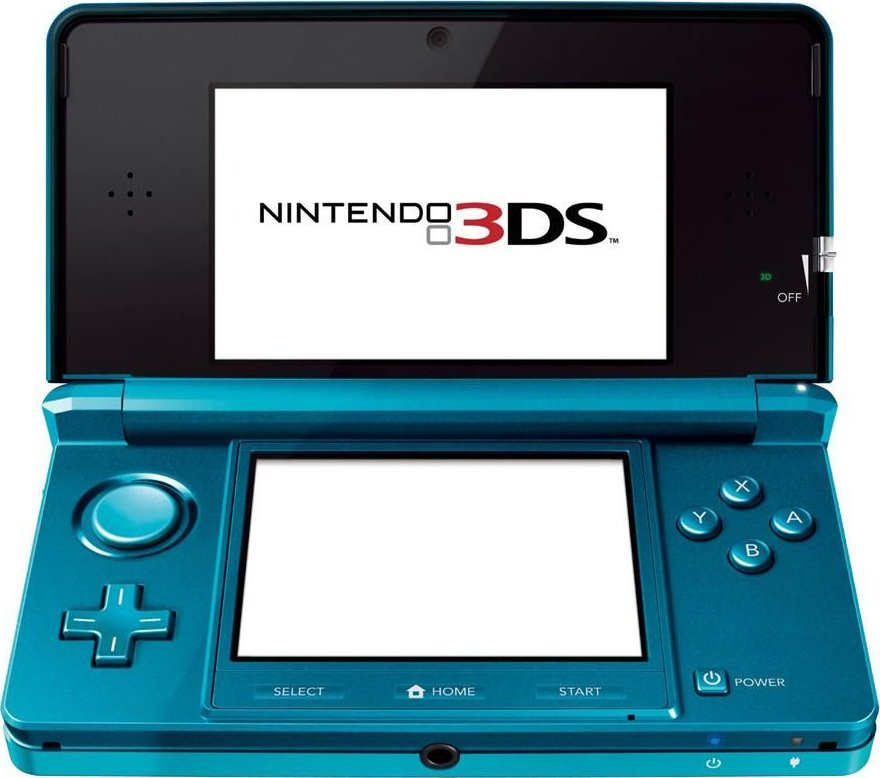
|
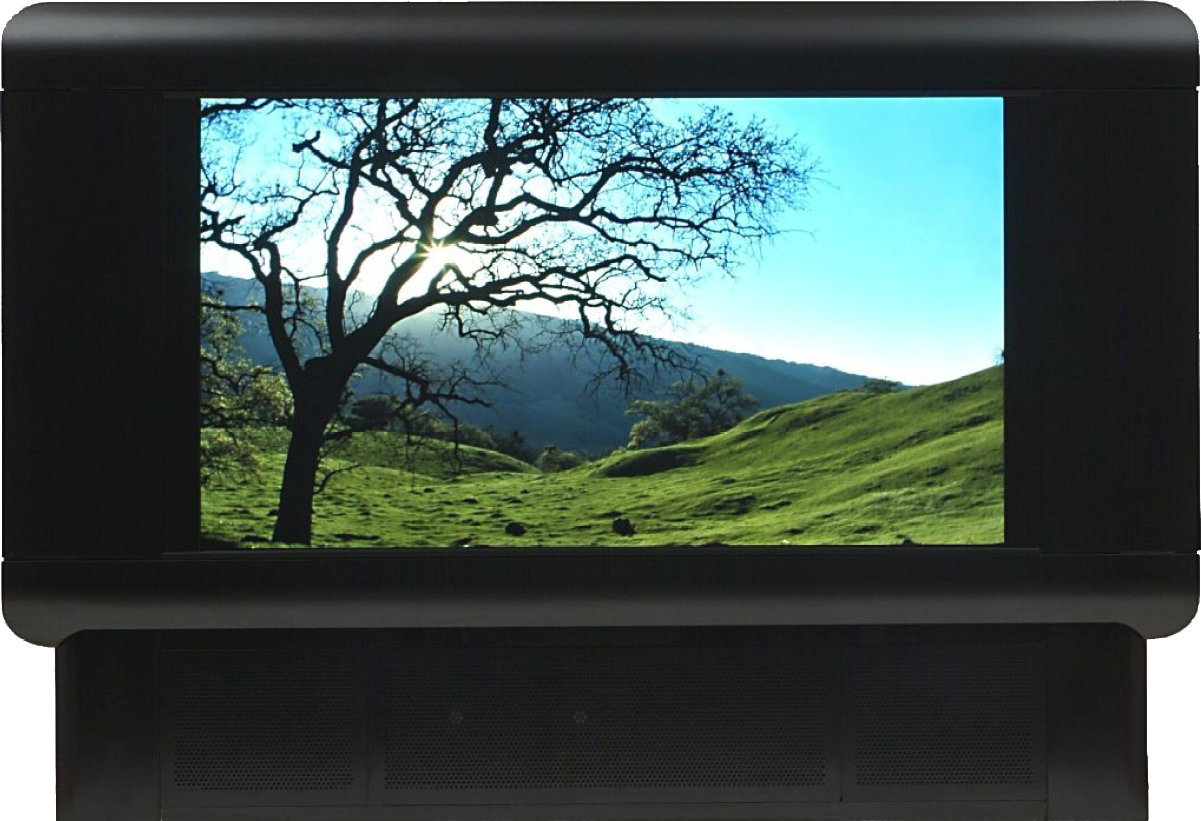
|
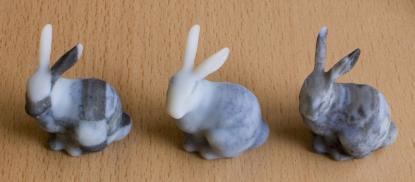
|
| Auto-stereoscopy display | HDR display | Printing both geometry and material |
| ©Nintendo | ©Dolby Digital | 55 |
Examples of new display technologies
With the evolution of measurement and display technologies that go beyond conventional images (e.g., as illustrated in Figure 1, High-Dynamic Range Imaging 85, stereo displays or new display technologies 59, and physical fabrication 29, 46, 55) the frontiers between real and virtual worlds are vanishing 42. In this context, a sensor combined with computational capabilities may also be considered as another kind of observer. Creating separate models for light, shape, and matter for such an extended range of applications and observers is often inefficient and sometimes provides unexpected results. Pertinent solutions must be able to take into account properties of the observer (human or machine) and application goals.
2.2 Methodology

Interactions/Transfers between real and virtual worlds.
2.2.1 Using a global approach
The main goal of the MANAO project is to study phenomena resulting from the interactions between the three components that describe light propagation and scattering in a 3D environment: light, shape, and matter. Improving knowledge about these phenomena facilitates the adaption of the developed digital, numerical, and analytic models to specific contexts. This leads to the development of new analysis tools, new representations, and new instruments for acquisition, visualization, and display.
To reach this goal, we have to first increase our understanding of the different phenomena resulting from the interactions between light, shape, and matter. For this purpose, we consider how they are captured or perceived by the final observer, taking into account the relative influence of each of the three components. Examples include but are not limited to:
- The manipulation of light to reveal reflective 34 or geometric properties 102, as mastered by professional photographers;
- The modification of material characteristics or lighting conditions 101 to better understand shape features, for instance to decipher archaeological artifacts;
- The large influence of shape on the captured variation of shading 83 and thus on the perception of material properties 98.
Based on the acquired knowledge of the influence of each of the components, we aim at developing new models that combine two or three of these components. Examples include the modeling of Bidirectional Texture Functions (BTFs) 45 that encode in a unique representation effects of parallax, multiple light reflections, and also shadows without requiring to store separately the reflective properties and the meso-scale geometric details, or Light-Fields that are used to render 3D scenes by storing only the result of the interactions between light, shape, and matter both in complex real environments and in simulated ones.
One of the strengths of MANAO is that we are inter-connecting computer graphics and optics (Figure 2). On one side, the laws of physics are required to create images but may be bent to either increase performance or user's control: this is one of the key advantage of computer graphics approach. It is worth noticing that what is not possible in the real world may be possible in a digital world. However, on the other side, the introduced approximations may help to better comprehend the physical interactions of light, shape, and matter.
2.2.2 Taking observers into account
The MANAO project specifically aims at considering information transfer, first from the real world to the virtual world (acquisition and creation), then from computers to observers (visualization and display). For this purpose, we use a larger definition of what an observer is: it may be a human user or a physical sensor equipped with processing capabilities. Sensors and their characteristics must be taken into account in the same way as we take into account the human visual system in computer graphics. Similarly, computational capabilities may be compared to cognitive capabilities of human users. Some characteristics are common to all observers, such as the scale of observed phenomena. Some others are more specifics to a set of observers. For this purpose, we have identified two classes of applications.
- Physical systems Provided our partnership that leads to close relationships with optics, one novelty of our approach is to extend the range of possible observers to physical sensors in order to work on domains such as simulation, mixed reality, and testing. Capturing, processing, and visualizing complex data is now more and more accessible to everyone, leading to the possible convergence of real and virtual worlds through visual signals. This signal is traditionally captured by cameras. It is now possible to augment them by projecting (e.g., the infrared laser of Microsoft Kinect) and capturing (e.g., GPS localization) other signals that are outside the visible range. These supplemental information replace values traditionally extracted from standard images and thus lower down requirements in computational power 70. Since the captured images are the result of the interactions between light, shape, and matter, the approaches and the improved knowledge from MANAO help in designing interactive acquisition and rendering technologies that are required to merge the real and the virtual world. With the resulting unified systems (optical and digital), transfer of pertinent information is favored and inefficient conversion is likely avoided, leading to new uses in interactive computer graphics applications, like augmented reality 33, 42 and computational photography 84.
- Interactive visualization This direction includes domains such as scientific illustration and visualization, artistic or plausible rendering. In all these cases, the observer, a human, takes part in the process, justifying once more our focus on real-time methods. When targeting average users, characteristics as well as limitations of the human visual system should be taken into account: in particular, it is known that some configurations of light, shape, and matter have masking and facilitation effects on visual perception 95. For specialized applications, the expertise of the final user and the constraints for 3D user interfaces lead to new uses and dedicated solutions for models and algorithms.
3 Research program
3.1 Related Scientific Domains

Related scientific domains of the MANAO project
The MANAO project aims at studying, acquiring, modeling, and rendering the interactions between the three components that are light, shape, and matter from the viewpoint of an observer. As detailed more lengthily in the next section, such a work will be done using the following approach: first, we will tend to consider that these three components do not have strict frontiers when considering their impacts on the final observers; then, we will not only work in computer graphics, but also at the intersection of computer graphics and optics, exploring the mutual benefits that the two domains may provide. It is thus intrinsically a transdisciplinary project (as illustrated in Figure 3) and we expect results in both domains.
Thus, the proposed team-project aims at establishing a close collaboration between computer graphics (e.g., 3D modeling, geometry processing, shading techniques, vector graphics, and GPU programming) and optics (e.g., design of optical instruments, and theories of light propagation). The following examples illustrate the strengths of such a partnership. First, in addition to simpler radiative transfer equations 47 commonly used in computer graphics, research in the later will be based on state-of-the-art understanding of light propagation and scattering in real environments. Furthermore, research will rely on appropriate instrumentation expertise for the measurement 60, 61 and display 59 of the different phenomena. Reciprocally, optics researches may benefit from the expertise of computer graphics scientists on efficient processing to investigate interactive simulation, visualization, and design. Furthermore, new systems may be developed by unifying optical and digital processing capabilities. Currently, the scientific background of most of the team members is related to computer graphics and computer vision. A large part of their work have been focused on simulating and analyzing optical phenomena as well as in acquiring and visualizing them. Combined with the close collaboration with the optics laboratory LP2N and with the students issued from the “Institut d'Optique”, this background ensures that we can expect the following results from the project: the construction of a common vocabulary for tightening the collaboration between the two scientific domains and creating new research topics. By creating this context, we expect to attract (and even train) more trans-disciplinary researchers.
At the boundaries of the MANAO project lie issues in human and machine vision. We have to deal with the former whenever a human observer is taken into account. On one side, computational models of human vision are likely to guide the design of our algorithms. On the other side, the study of interactions between light, shape, and matter may shed some light on the understanding of visual perception. The same kind of connections are expected with machine vision. On the one hand, traditional computational methods for acquisition (such as photogrammetry) are going to be part of our toolbox. On the other hand, new display technologies (such as the ones used for augmented reality) are likely to benefit from our integrated approach and systems. In the MANAO project we are mostly users of results from human vision. When required, some experimentation might be done in collaboration with experts from this domain, like with the European PRISM project. For machine vision, provided the tight collaboration between optical and digital systems, research will be carried out inside the MANAO project.
Analysis and modeling rely on tools from applied mathematics such as differential and projective geometry, multi-scale models, frequency analysis 49 or differential analysis 83, linear and non-linear approximation techniques, stochastic and deterministic integrations, and linear algebra. We not only rely on classical tools, but also investigate and adapt recent techniques (e.g., improvements in approximation techniques), focusing on their ability to run on modern hardware: the development of our own tools (such as Eigen) is essential to control their performances and their abilities to be integrated into real-time solutions or into new instruments.
3.2 Research axes
The MANAO project is organized around four research axes that cover the large range of expertise of its members and associated members. We briefly introduce these four axes in this section. More details and their inter-influences that are illustrated in the Figure 2 will be given in the following sections.
Axis 1 is the theoretical foundation of the project. Its main goal is to increase the understanding of light, shape, and matter interactions by combining expertise from different domains: optics and human/machine vision for the analysis and computer graphics for the simulation aspect. The goal of our analyses is to identify the different layers/phenomena that compose the observed signal. In a second step, the development of physical simulations and numerical models of these identified phenomena is a way to validate the pertinence of the proposed decompositions.
In Axis 2, the final observers are mainly physical captors. Our goal is thus the development of new acquisition and display technologies that combine optical and digital processes in order to reach fast transfers between real and digital worlds, in order to increase the convergence of these two worlds.
Axes 3 and 4 focus on two aspects of computer graphics: rendering, visualization and illustration in Axis 3, and editing and modeling (content creation) in Axis 4. In these two axes, the final observers are mainly human users, either generic users or expert ones (e.g., archaeologist 87, computer graphics artists).
3.3 Axis 1: Analysis and Simulation
Challenge: Definition and understanding of phenomena resulting from interactions between light, shape, and matter as seen from an observer point of view.
Results: Theoretical tools and numerical models for analyzing and simulating the observed optical phenomena.
To reach the goals of the MANAO project, we need to increase our understanding of how light, shape, and matter act together in synergy and how the resulting signal is finally observed. For this purpose, we need to identify the different phenomena that may be captured by the targeted observers. This is the main objective of this research axis, and it is achieved by using three approaches: the simulation of interactions between light, shape, and matter, their analysis and the development of new numerical models. This resulting improved knowledge is a foundation for the researches done in the three other axes, and the simulation tools together with the numerical models serve the development of the joint optical/digital systems in Axis 2 and their validation.
One of the main and earliest goals in computer graphics is to faithfully reproduce the real world, focusing mainly on light transport. Compared to researchers in physics, researchers in computer graphics rely on a subset of physical laws (mostly radiative transfer and geometric optics), and their main concern is to efficiently use the limited available computational resources while developing as fast as possible algorithms. For this purpose, a large set of theoretical as well as computational tools has been introduced to take a maximum benefit of hardware specificities. These tools are often dedicated to specific phenomena (e.g., direct or indirect lighting, color bleeding, shadows, caustics). An efficiency-driven approach needs such a classification of light paths 56 in order to develop tailored strategies 99. For instance, starting from simple direct lighting, more complex phenomena have been progressively introduced: first diffuse indirect illumination 54, 91, then more generic inter-reflections 63, 47 and volumetric scattering 88, 44. Thanks to this search for efficiency and this classification, researchers in computer graphics have developed a now recognized expertise in fast-simulation of light propagation. Based on finite elements (radiosity techniques) or on unbiased Monte Carlo integration schemes (ray-tracing, particle-tracing, ...), the resulting algorithms and their combination are now sufficiently accurate to be used-back in physical simulations. The MANAO project will continue the search for efficient and accurate simulation techniques, but extending it from computer graphics to optics. Thanks to the close collaboration with scientific researchers from optics, new phenomena beyond radiative transfer and geometric optics will be explored.
Search for algorithmic efficiency and accuracy has to be done in parallel with numerical models. The goal of visual fidelity (generalized to accuracy from an observer point of view in the project) combined with the goal of efficiency leads to the development of alternative representations. For instance, common classical finite-element techniques compute only basis coefficients for each discretization element: the required discretization density would be too large and to computationally expensive to obtain detailed spatial variations and thus visual fidelity. Examples includes texture for decorrelating surface details from surface geometry and high-order wavelets for a multi-scale representation of lighting 43. The numerical complexity explodes when considering directional properties of light transport such as radiance intensity (Watt per square meter and per steradian - ), reducing the possibility to simulate or accurately represent some optical phenomena. For instance, Haar wavelets have been extended to the spherical domain 90 but are difficult to extend to non-piecewise-constant data 93. More recently, researches prefer the use of Spherical Radial Basis Functions 96 or Spherical Harmonics 82. For more complex data, such as reflective properties (e.g., BRDF 76, 64 - 4D), ray-space (e.g., Light-Field 72 - 4D), spatially varying reflective properties (6D - 86), new models, and representations are still investigated such as rational functions 79 or dedicated models 31 and parameterizations 89, 94. For each (newly) defined phenomena, we thus explore the space of possible numerical representations to determine the most suited one for a given application, like we have done for BRDF 79.
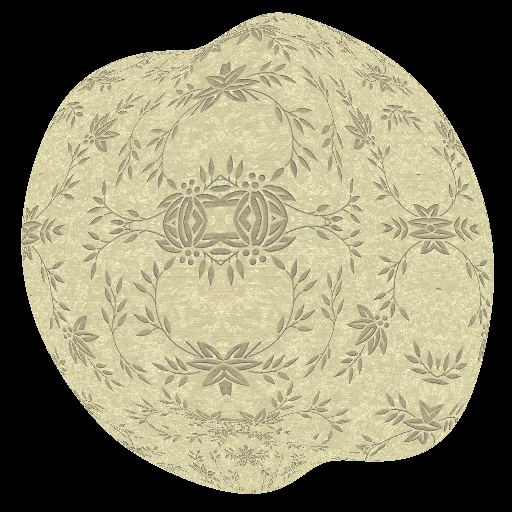
|
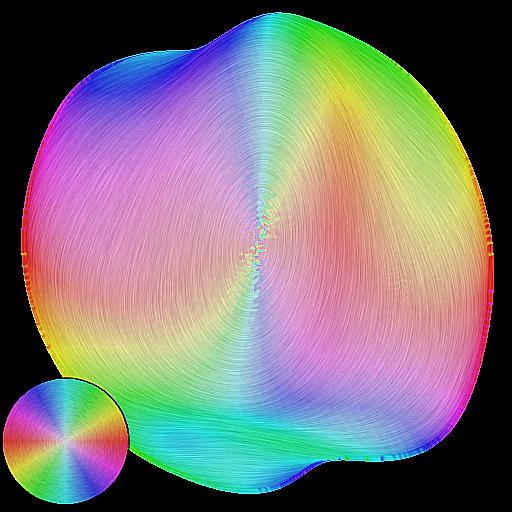
|
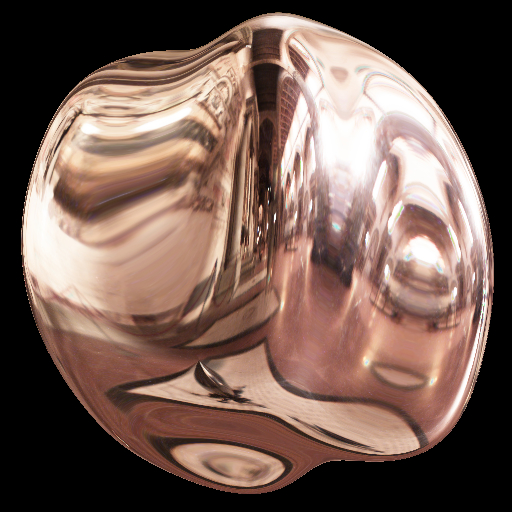
|
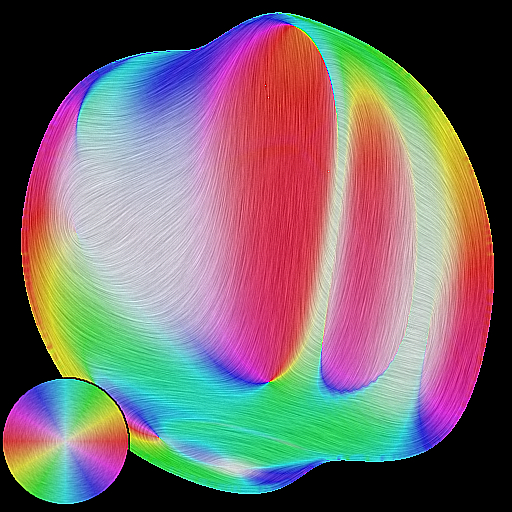
|
| Texuring | 1st order gradient field | Environment reflection | 2st order gradient field |
Firts-order analysis
Before being able to simulate or to represent the different observed phenomena, we need to define and describe them. To understand the difference between an observed phenomenon and the classical light, shape, and matter decomposition, we can take the example of a highlight. Its observed shape (by a human user or a sensor) is the resulting process of the interaction of these three components, and can be simulated this way. However, this does not provide any intuitive understanding of their relative influence on the final shape: an artist will directly describe the resulting shape, and not each of the three properties. We thus want to decompose the observed signal into models for each scale that can be easily understandable, representable, and manipulable. For this purpose, we will rely on the analysis of the resulting interaction of light, shape, and matter as observed by a human or a physical sensor. We first consider this analysis from an optical point of view, trying to identify the different phenomena and their scale according to their mathematical properties (e.g., differential 83 and frequency analysis 49). Such an approach has leaded us to exhibit the influence of surfaces flows (depth and normal gradients) into lighting pattern deformation (see Figure 4). For a human observer, this correspond to one recent trend in computer graphics that takes into account the human visual systems 51 both to evaluate the results and to guide the simulations.
3.4 Axis 2: From Acquisition to Display
Challenge: Convergence of optical and digital systems to blend real and virtual worlds.
Results: Instruments to acquire real world, to display virtual world, and to make both of them interact.
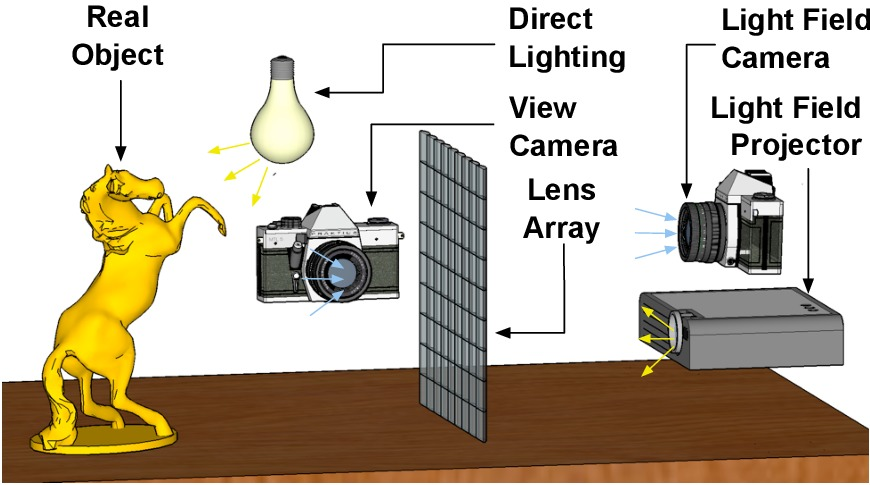
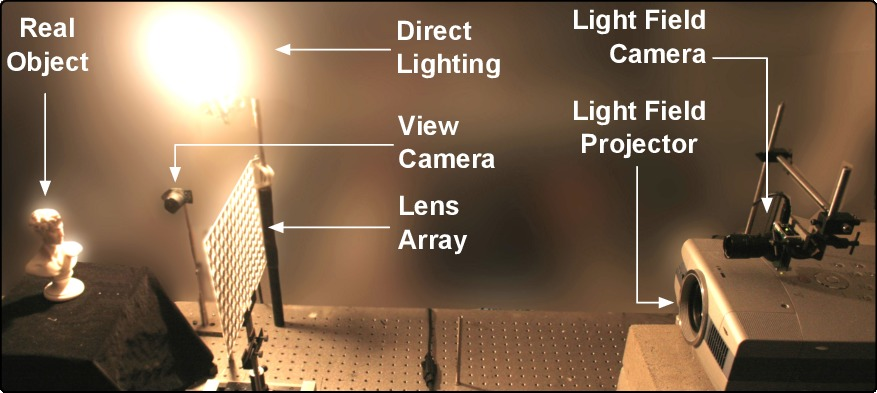
Light-Field transfer
In this axis, we investigate unified acquisition and display systems, that is systems which combine optical instruments with digital processing. From digital to real, we investigate new display approaches 72, 59. We consider projecting systems and surfaces 38, for personal use, virtual reality and augmented reality 33. From the real world to the digital world, we favor direct measurements of parameters for models and representations, using (new) optical systems unless digitization is required 53, 52. These resulting systems have to acquire the different phenomena described in Axis 1 and to display them, in an efficient manner 57, 32, 58, 61. By efficient, we mean that we want to shorten the path between the real world and the virtual world by increasing the data bandwidth between the real (analog) and the virtual (digital) worlds, and by reducing the latency for real-time interactions (we have to prevent unnecessary conversions, and to reduce processing time). To reach this goal, the systems have to be designed as a whole, not by a simple concatenation of optical systems and digital processes, nor by considering each component independently 62.
To increase data bandwidth, one solution is to parallelize more and more the physical systems. One possible solution is to multiply the number of simultaneous acquisitions (e.g., simultaneous images from multiple viewpoints 61, 81). Similarly, increasing the number of viewpoints is a way toward the creation of full 3D displays 72. However, full acquisition or display of 3D real environments theoretically requires a continuous field of viewpoints, leading to huge data size. Despite the current belief that the increase of computational power will fill the missing gap, when it comes to visual or physical realism, if you double the processing power, people may want four times more accuracy, thus increasing data size as well. To reach the best performances, a trade-off has to be found between the amount of data required to represent accurately the reality and the amount of required processing. This trade-off may be achieved using compressive sensing. Compressive sensing is a new trend issued from the applied mathematics community that provides tools to accurately reconstruct a signal from a small set of measurements assuming that it is sparse in a transform domain (e.g., 80, 105).
We prefer to achieve this goal by avoiding as much as possible the classical approach where acquisition is followed by a fitting step: this requires in general a large amount of measurements and the fitting itself may consume consequently too much memory and preprocessing time. By preventing unnecessary conversion through fitting techniques, such an approach increase the speed and reduce the data transfer for acquisition but also for display. One of the best recent examples is the work of Cossairt et al. 42. The whole system is designed around a unique representation of the energy-field issued from (or leaving) a 3D object, either virtual or real: the Light-Field. A Light-Field encodes the light emitted in any direction from any position on an object. It is acquired thanks to a lens-array that leads to the capture of, and projection from, multiple simultaneous viewpoints. A unique representation is used for all the steps of this system. Lens-arrays, parallax barriers, and coded-aperture 69 are one of the key technologies to develop such acquisition (e.g., Light-Field camera 1 62 and acquisition of light-sources 53), projection systems (e.g., auto-stereoscopic displays). Such an approach is versatile and may be applied to improve classical optical instruments 67. More generally, by designing unified optical and digital systems 77, it is possible to leverage the requirement of processing power, the memory footprint, and the cost of optical instruments.
Those are only some examples of what we investigate. We also consider the following approaches to develop new unified systems. First, similar to (and based on) the analysis goal of Axis 1, we have to take into account as much as possible the characteristics of the measurement setup. For instance, when fitting cannot be avoided, integrating them may improve both the processing efficiency and accuracy 79. Second, we have to integrate signals from multiple sensors (such as GPS, accelerometer, ...) to prevent some computation (e.g., 70). Finally, the experience of the group in surface modeling help the design of optical surfaces 65 for light sources or head-mounted displays.
3.5 Axis 3: Rendering, Visualization and Illustration
Challenge: How to offer the most legible signal to the final observer in real-time?
Results: High-level shading primitives, expressive rendering techniques for object depiction, real-time realistic rendering algorithms
Rendering techniques from realistic solutions to more expressive ones.
The main goal of this axis is to offer to the final observer, in this case mostly a human user, the most legible signal in real-time. Thanks to the analysis and to the decomposition in different phenomena resulting from interactions between light, shape, and matter (Axis 1), and their perception, we can use them to convey essential information in the most pertinent way. Here, the word pertinent can take various forms depending on the application.
In the context of scientific illustration and visualization, we are primarily interested in tools to convey shape or material characteristics of objects in animated 3D scenes. Expressive rendering techniques (see Figure 6c,d) provide means for users to depict such features with their own style. To introduce our approach, we detail it from a shape-depiction point of view, domain where we have acquired a recognized expertise. Prior work in this area mostly focused on stylization primitives to achieve line-based rendering 103, 66 or stylized shading 36, 101 with various levels of abstraction. A clear representation of important 3D object features remains a major challenge for better shape depiction, stylization and abstraction purposes. Most existing representations provide only local properties (e.g., curvature), and thus lack characterization of broader shape features. To overcome this limitation, we are developing higher level descriptions of shape 30 with increased robustness to sparsity, noise, and outliers. This is achieved in close collaboration with Axis 1 by the use of higher-order local fitting methods, multi-scale analysis, and global regularization techniques. In order not to neglect the observer and the material characteristics of the objects, we couple this approach with an analysis of the appearance model. To our knowledge, this is an approach which has not been considered yet. This research direction is at the heart of the MANAO project, and has a strong connection with the analysis we plan to conduct in Axis 1. Material characteristics are always considered at the light ray level, but an understanding of higher-level primitives (like the shape of highlights and their motion) would help us to produce more legible renderings and permit novel stylizations; for instance, there is no method that is today able to create stylized renderings that follow the motion of highlights or shadows. We also believe such tools also play a fundamental role for geometry processing purposes (such as shape matching, reassembly, simplification), as well as for editing purposes as discussed in Axis 4.
In the context of real-time photo-realistic rendering ((see Figure 6a,b), the challenge is to compute the most plausible images with minimal effort. During the last decade, a lot of work has been devoted to design approximate but real-time rendering algorithms of complex lighting phenomena such as soft-shadows 104, motion blur 49, depth of field 92, reflexions, refractions, and inter-reflexions. For most of these effects it becomes harder to discover fundamentally new and faster methods. On the other hand, we believe that significant speedup can still be achieved through more clever use of massively parallel architectures of the current and upcoming hardware, and/or through more clever tuning of the current algorithms. In particular, regarding the second aspect, we remark that most of the proposed algorithms depend on several parameters which can be used to trade the speed over the quality. Significant speed-up could thus be achieved by identifying effects that would be masked or facilitated and thus devote appropriate computational resources to the rendering 68, 48. Indeed, the algorithm parameters controlling the quality vs speed are numerous without a direct mapping between their values and their effect. Moreover, their ideal values vary over space and time, and to be effective such an auto-tuning mechanism has to be extremely fast such that its cost is largely compensated by its gain. We believe that our various work on the analysis of the appearance such as in Axis 1 could be beneficial for such purpose too.
Realistic and real-time rendering is closely related to Axis 2: real-time rendering is a requirement to close the loop between real world and digital world. We have to thus develop algorithms and rendering primitives that allow the integration of the acquired data into real-time techniques. We have also to take care of that these real-time techniques have to work with new display systems. For instance, stereo, and more generally multi-view displays are based on the multiplication of simultaneous images. Brute force solutions consist in independent rendering pipeline for each viewpoint. A more energy-efficient solution would take advantages of the computation parts that may be factorized. Another example is the rendering techniques based on image processing, such as our work on augmented reality 40. Independent image processing for each viewpoint may disturb the feeling of depth by introducing inconsistent information in each images. Finally, more dedicated displays 59 would require new rendering pipelines.
3.6 Axis 4: Editing and Modeling
Challenge: Editing and modeling appearance using drawing- or sculpting-like tools through high level representations.
Results: High-level primitives and hybrid representations for appearance and shape.
During the last decade, the domain of computer graphics has exhibited tremendous improvements in image quality, both for 2D applications and 3D engines. This is mainly due to the availability of an ever increasing amount of shape details, and sophisticated appearance effects including complex lighting environments. Unfortunately, with such a growth in visual richness, even so-called vectorial representations (e.g., subdivision surfaces, Bézier curves, gradient meshes, etc.) become very dense and unmanageable for the end user who has to deal with a huge mass of control points, color labels, and other parameters. This is becoming a major challenge, with a necessity for novel representations. This Axis is thus complementary of Axis 3: the focus is the development of primitives that are easy to use for modeling and editing.
More specifically, we plan to investigate vectorial representations that would be amenable to the production of rich shapes with a minimal set of primitives and/or parameters. To this end we plan to build upon our insights on dynamic local reconstruction techniques and implicit surfaces 4135. When working in 3D, an interesting approach to produce detailed shapes is by means of procedural geometry generation. For instance, many natural phenomena like waves or clouds may be modeled using a combination of procedural functions. Turning such functions into triangle meshes (main rendering primitives of GPUs) is a tedious process that appears not to be necessary with an adapted vectorial shape representation where one could directly turn procedural functions into implicit geometric primitives. Since we want to prevent unnecessary conversions in the whole pipeline (here, between modeling and rendering steps), we will also consider hybrid representations mixing meshes and implicit representations. Such research has thus to be conducted while considering the associated editing tools as well as performance issues. It is indeed important to keep real-time performance (cf. Axis 2) throughout the interaction loop, from user inputs to display, via editing and rendering operations. Finally, it would be interesting to add semantic information into 2D or 3D geometric representations. Semantic geometry appears to be particularly useful for many applications such as the design of more efficient manipulation and animation tools, for automatic simplification and abstraction, or even for automatic indexing and searching. This constitutes a complementary but longer term research direction.
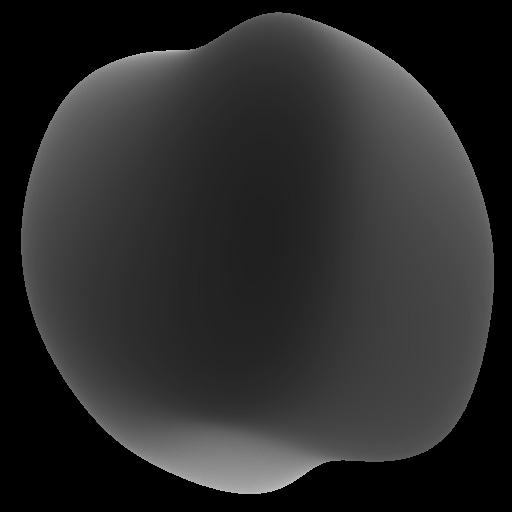
|
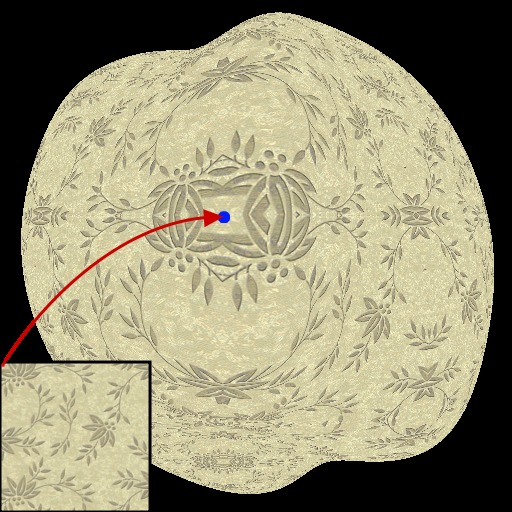
|
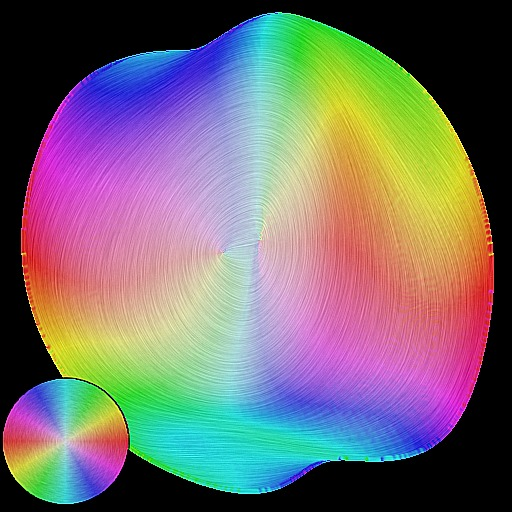
|
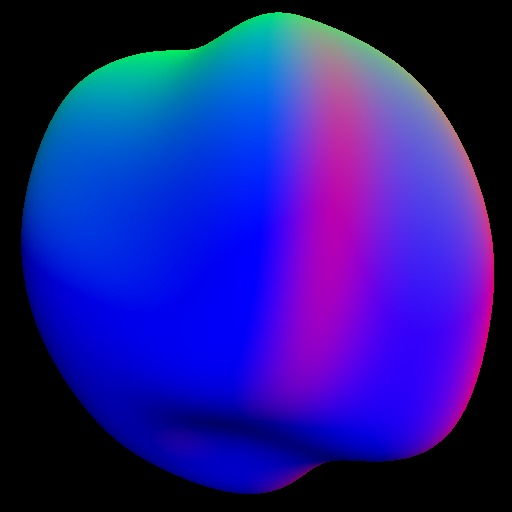
|
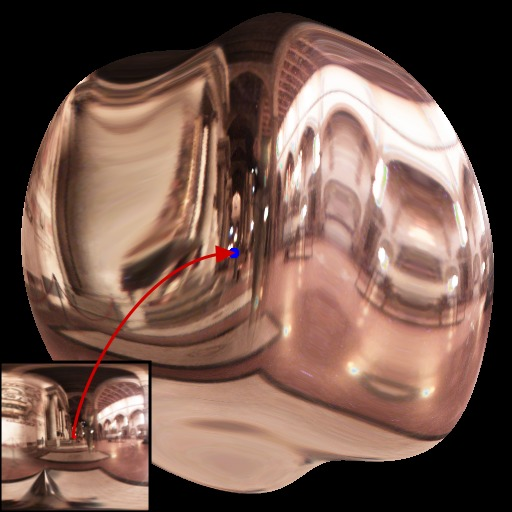
|
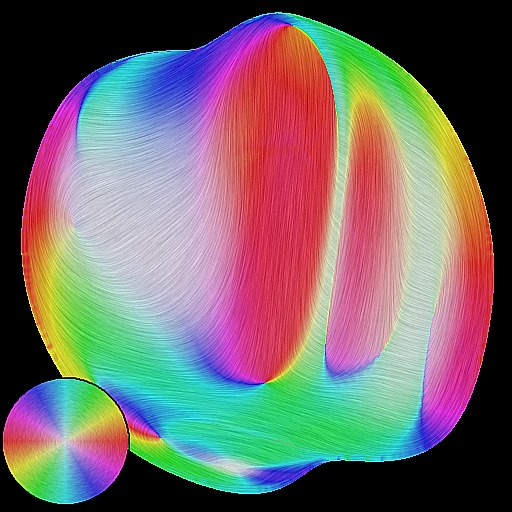
|
| (a) | (b) | (c) | (d) | (e) | (f) |
A system that mimics texture (left) and shading (right) effects using image processing alone.
In the MANAO project, we want to investigate representations beyond the classical light, shape, and matter decomposition. We thus want to directly control the appearance of objects both in 2D and 3D applications (e.g., 97): this is a core topic of computer graphics. When working with 2D vector graphics, digital artists must carefully set up color gradients and textures: examples range from the creation of 2D logos to the photo-realistic imitation of object materials. Classic vector primitives quickly become impractical for creating illusions of complex materials and illuminations, and as a result an increasing amount of time and skill is required. This is only for still images. For animations, vector graphics are only used to create legible appearances composed of simple lines and color gradients. There is thus a need for more complex primitives that are able to accommodate complex reflection or texture patterns, while keeping the ease of use of vector graphics. For instance, instead of drawing color gradients directly, it is more advantageous to draw flow lines that represent local surface concavities and convexities. Going through such an intermediate structure then allows to deform simple material gradients and textures in a coherent way (see Figure 7), and animate them all at once. The manipulation of 3D object materials also raises important issues. Most existing material models are tailored to faithfully reproduce physical behaviors, not to be easily controllable by artists. Therefore artists learn to tweak model parameters to satisfy the needs of a particular shading appearance, which can quickly become cumbersome as the complexity of a 3D scene increases. We believe that an alternative approach is required, whereby material appearance of an object in a typical lighting environment is directly input (e.g., painted or drawn), and adapted to match a plausible material behavior. This way, artists will be able to create their own appearance (e.g., by using our shading primitives 97), and replicate it to novel illumination environments and 3D models. For this purpose, we will rely on the decompositions and tools issued from Axis 1.
4 Application domains
4.1 Physical Systems
Given our close relationships with researchers in optics, one novelty of our approach is to extend the range of possible observers to physical sensors in order to work on domains such as simulation, mixed reality, and testing. Capturing, processing, and visualizing complex data is now more and more accessible to everyone, leading to the possible convergence of real and virtual worlds through visual signals. This signal is traditionally captured by cameras. It is now possible to augment them by projecting (e.g., the infrared laser of Microsoft Kinect) and capturing (e.g., GPS localization) other signals that are outside the visible range. This supplemental information replaces values traditionally extracted from standard images and thus lowers down requirements in computational power. Since the captured images are the result of the interactions between light, shape, and matter, the approaches and the improved knowledge from MANAO help in designing interactive acquisition and rendering technologies that are required to merge the real and the virtual worlds. With the resulting unified systems (optical and digital), transfer of pertinent information is favored and inefficient conversion is likely avoided, leading to new uses in interactive computer graphics applications, like augmented reality, displays and computational photography.
4.2 Interactive Visualization and Modeling
This direction includes domains such as scientific illustration and visualization, artistic or plausible rendering, and 3D modeling. In all these cases, the observer, a human, takes part in the process, justifying once more our focus on real-time methods. When targeting average users, characteristics as well as limitations of the human visual system should be taken into account: in particular, it is known that some configurations of light, shape, and matter have masking and facilitation effects on visual perception. For specialized applications (such as archeology), the expertise of the final user and the constraints for 3D user interfaces lead to new uses and dedicated solutions for models and algorithms.
5 Social and environmental responsibility
5.1 Footprint of research activities
For a few years now, our team has been collectively careful in limiting its direct environmental impacts, mainly by limiting the number of flights and extending the lifetime of PCs and laptops beyond the warranty period.
5.2 Environmental involvement
Gaël Guennebaud is engaged in several actions and initiatives related to the environmental issues within the research and higher-education domain:
- Ecoinfo: He is involved within the GDS Ecoinfo of the CNRS, and in particular he is in charge of the development of the ecodiag tool among other activities.
- Labo1point5: He is part of the labos1point5 GDR, in particular to help with the development of a module to take into account the carbon footprint of ICT devices and external computing ressources within their carbon footprint estimation tool (GES1point5). The first version of the module has been released in October 2021.
- He participates in the elaboration and dissemination of an introductory course to climate change issues and environnemental impacts of ICT, with two colleagues of the LaBRI.
Both Gaël Guennebaud and Pascal Barla have compiled research projects conducted by Inria teams around environmental issues within Bordeaux research center, and prepared material for presentation to different audiences.
6 Highlights of the year
6.1 Awards
- Two papers published at Siggraph: one on Micrograin distributions 14 in the journal track, the other on 3D animation exaggeration (SMEAR) 20 in the conference track;
- A Blender plugin for the SMEAR technique. It has been downloaded more than 2000 times since its incorporation in the Blender add-on library in early December.
7 New software, platforms, open data
7.1 New software
7.1.1 Spectral Viewer
-
Keyword:
Image
-
Functional Description:
An open-source (spectral) image viewer that supports several images formats: ENVI (spectral), exr, png, jpg.
- URL:
-
Contact:
Romain Pacanowski
-
Partner:
LP2N (CNRS - UMR 5298)
7.1.2 Malia
-
Name:
The Malia Rendering Framework
-
Keywords:
3D, Realistic rendering, GPU, Ray-tracing, Material appearance
-
Functional Description:
The Malia Rendering Framework is an open source library for predictive, physically-realistic rendering. It comes with several applications, including a spectral path tracer, RGB-to-spectral conversion routines a blender bridge and a spectral image viewer.
- URL:
-
Contact:
Romain Pacanowski
7.1.3 FRITE
-
Keywords:
2D animation, Vector-based drawing
-
Functional Description:
2D animation software allowing non linear editing
-
Release Contributions:
Occlusions between drawing parts and self-occlusions
- Publications:
-
Contact:
Pierre Benard
7.1.4 ecodiag
-
Keywords:
CO2, Carbon footprint, Web Services
-
Functional Description:
Ecodiag is a web service to estimate the carbon footprint of the computer equipments.
-
Contact:
Gael Guennebaud
-
Partner:
Ecoinfo
7.1.5 FtthPowerSim
-
Keywords:
Power consumption, Network simulator
-
Functional Description:
This web application is a demo of the methodology and model detailed in the paper Assessing VoD pressure on network power consumption. It's purpose is to estimate the dimensioning and power consumption of a fiber network infrastructure that is ideally sized to satisfy different usage scenarios. It is tailored to cover a territory of the size of France centered around a main IXP collocated with a unique CDN playing the role of a cache.
- URL:
-
Contact:
Gael Guennebaud
-
Partners:
Université de Bordeaux, LaBRI
7.1.6 SMEAR
-
Keyword:
3D animation
-
Functional Description:
SMEAR is a 3D animation stylization Blender add-on, aimed at creation and customization of smear frames such as elongated in-betweens, multiple in-betweens and motion lines.
- Publication:
-
Contact:
Jean Basset
7.2 New platforms
7.2.1 La Coupole
Participants: Romain Pacanowski, Marjorie Paillet, Morgane Gerardin, David Murray.

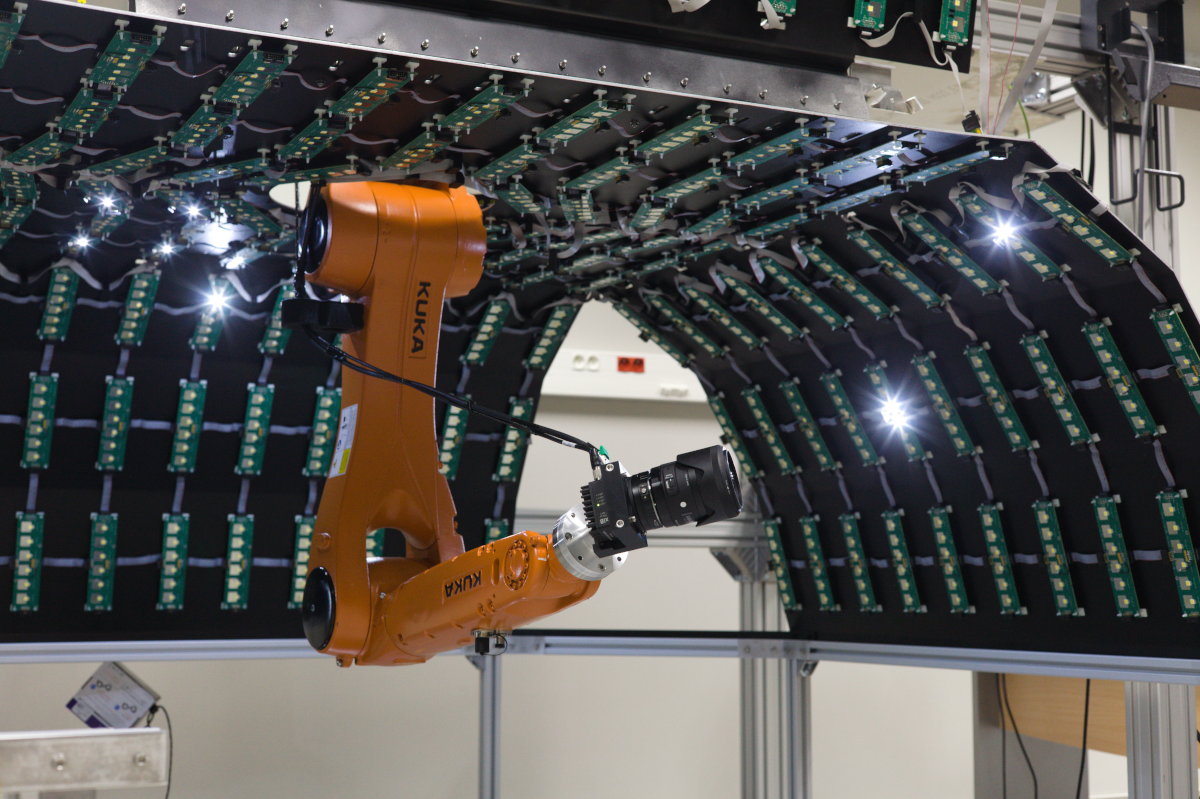
View of La Coupole
Left, view of La Coupole and the robot with the 3D scanner mounted, before the acquisition phase of the optical properties performed with a high speed camera (Right) that photographs the object for each lit LED. (Photo Credits Arthur Pequin.)
La Coupole is a measurement device that acquires spatially-varying reflectance function (SV-BRDF) on non-planar object which area can be up to 1.5m.
Its main characteristics are:
- RGB 12MP Camera (100 fps)
- 6-axes Robot
- 1080 White LED
- 3D Laser Scanner Laser: 200 resolution
- Maximal Measurement Area: 1.75 m
- Optical Resolution: 50
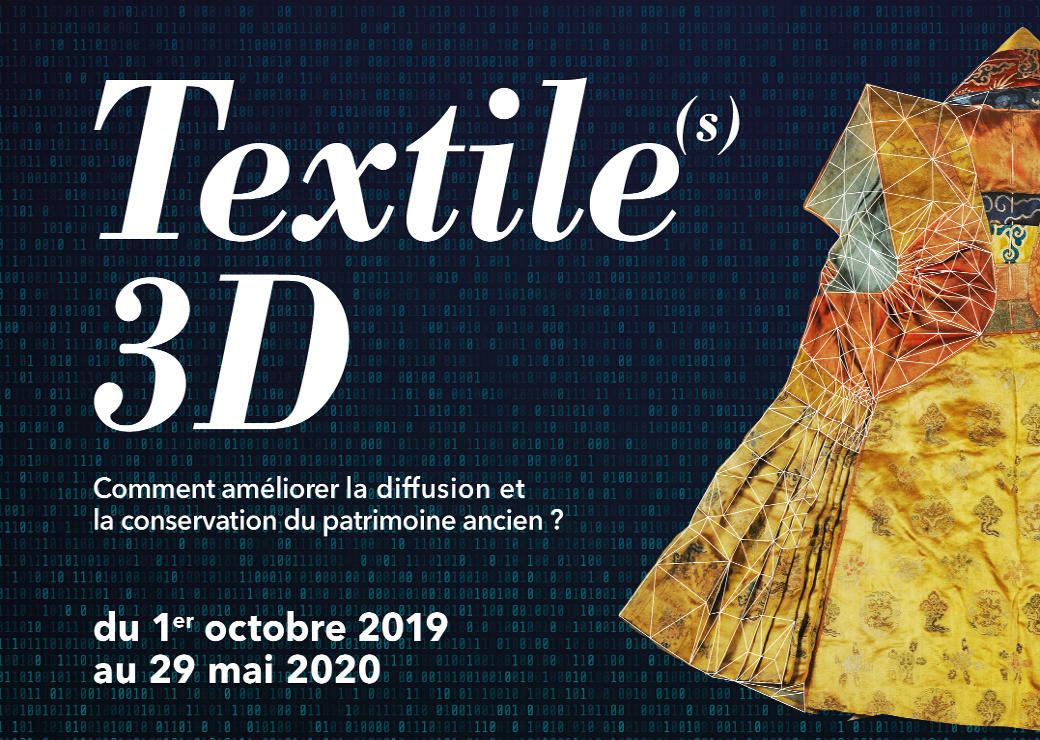
|
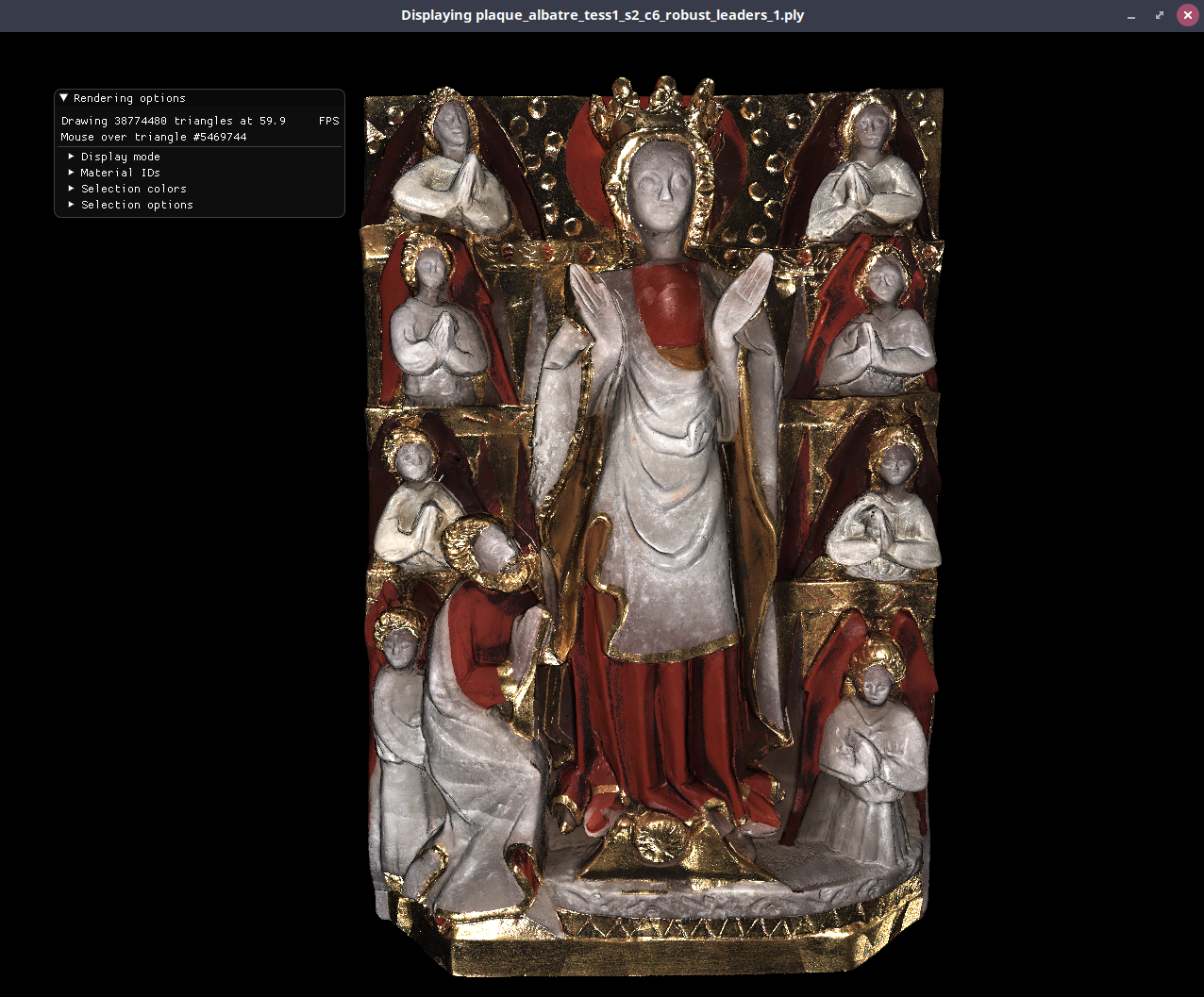
|
Left, official poster of the Exhibition Textiles 3D presented to the museum of Ethnography of Bordeaux. Right, 3D digital reconstruction of an alabaster piece using data acquired by La Coupole.
Official poster of the Exhibition and 3D digital reconstruction of an alabaster.
Left, official poster of the Exhibition Textiles 3D presented to the museum of Ethnography of Bordeaux. Right, 3D digital reconstruction of an alabaster piece using data acquired by La Coupole.
La Coupole is capable of measuring objects with an average angular accuracy of 0.22 degrees, generates 4 terabytes of data per hour of measurement and allows the measurement of spatially varying BRDFs (SV-BRDF) on a non-planar shape. The 50 mm lens combined with the camera allows to obtain a spatial resolution resolution of 50 microns which corresponds approximately to the resolution of the human visual system (for an object placed at about 20 cm from the observer). After two years of conception and realization, la Coupole was used to digitize 10 garments from the collections (cf. Figure 10) of the Ethnography Museum of Bordeaux as well as as well as a reconstruction of an alabaster (cf. Figure 9) within the framework of the project LaBeX "Albâtres" project and will continue to be used the project VESPAA.

|
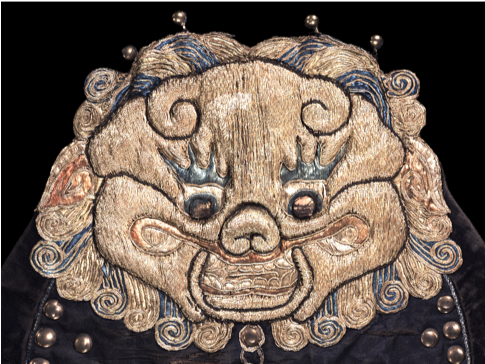
|
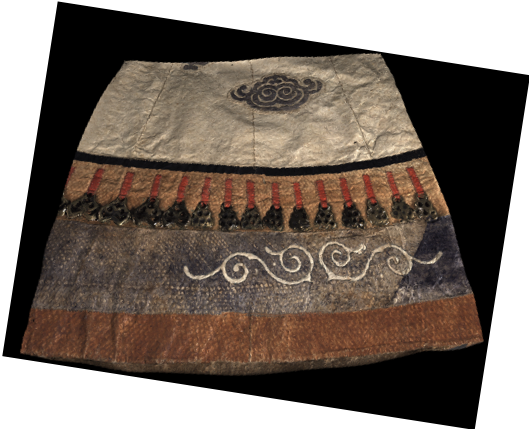
|
| Gilet de Femme | Ceinture | Manteau |
Examples of numerical reconstructions from data acquired with La Coupole.
Numerical reconstructions with albedo (hemispherical reflectivity) per mesh vertex for different types of clothing : Left, the woman's silk and cotton vest (Tibet, late nineteenth century), a video featuring other points of view viewpoints is available here. Center,partial view of a central ornament of the apron: in navy blue quilted satin with embroidery in net representing a lion's head, and blue, white and red floche silk embroideries, a little yellow; black velvet facings; origin: China, 19th century. Right, coat made of fish skins from Siberia (twentieth century), a video showing other views is available views is availablehere.
7.2.2 HYPERION: Measuring Bidirectional Subscattering Reflectance and Transmission Functions
Participants: Morgane Gerardin, Romain Pacanowski.
A new platform (cf. Figure 11), hyperion, to measure the volumetric properties of the light is currently being developed. The project started in March 2022 with the arrival of our new postdoctoral fellow Morgane Gérardin. The plaform permits to measure the diffusion of the light in reflection (aka BSSRDF) but also in Transmission (BSSTDF). A sample holder with two motorized axes orientates the sample wrt. to the direction of incident illumination while another motorized axis rotates a camera to image the sample (cf. Figure 12).
The platform has been validated with a publication in the journal Optics Express 12
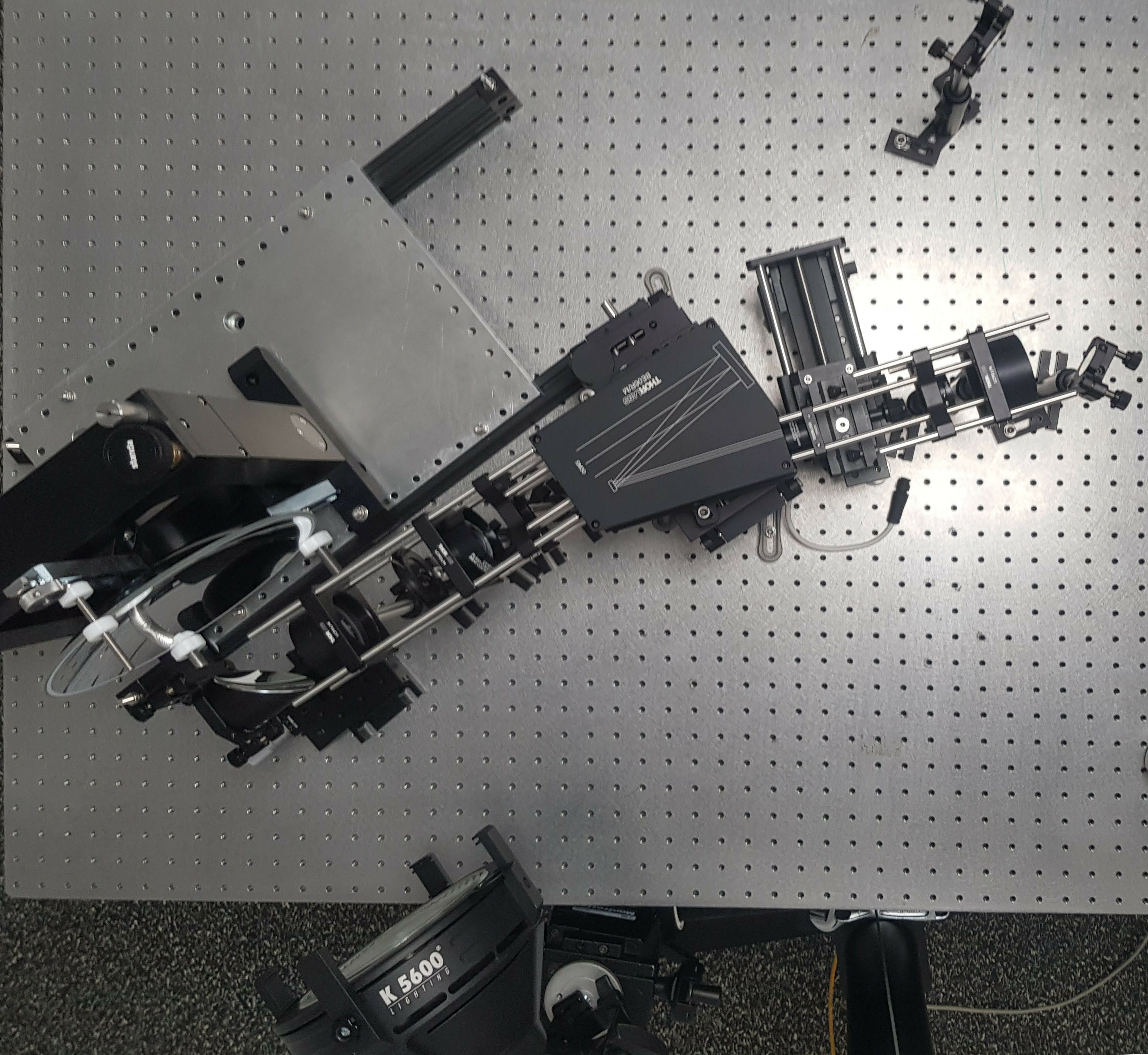
|
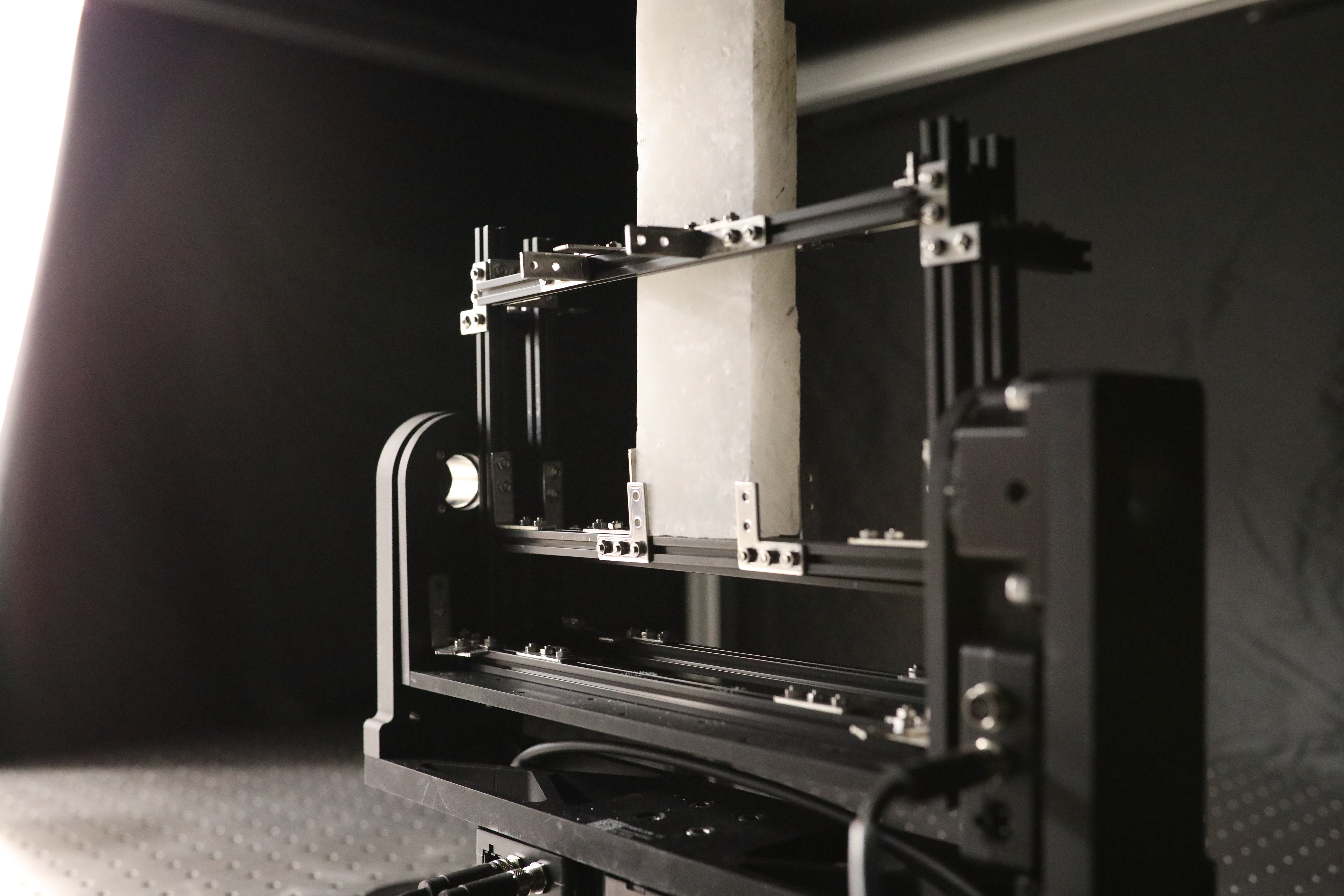
|
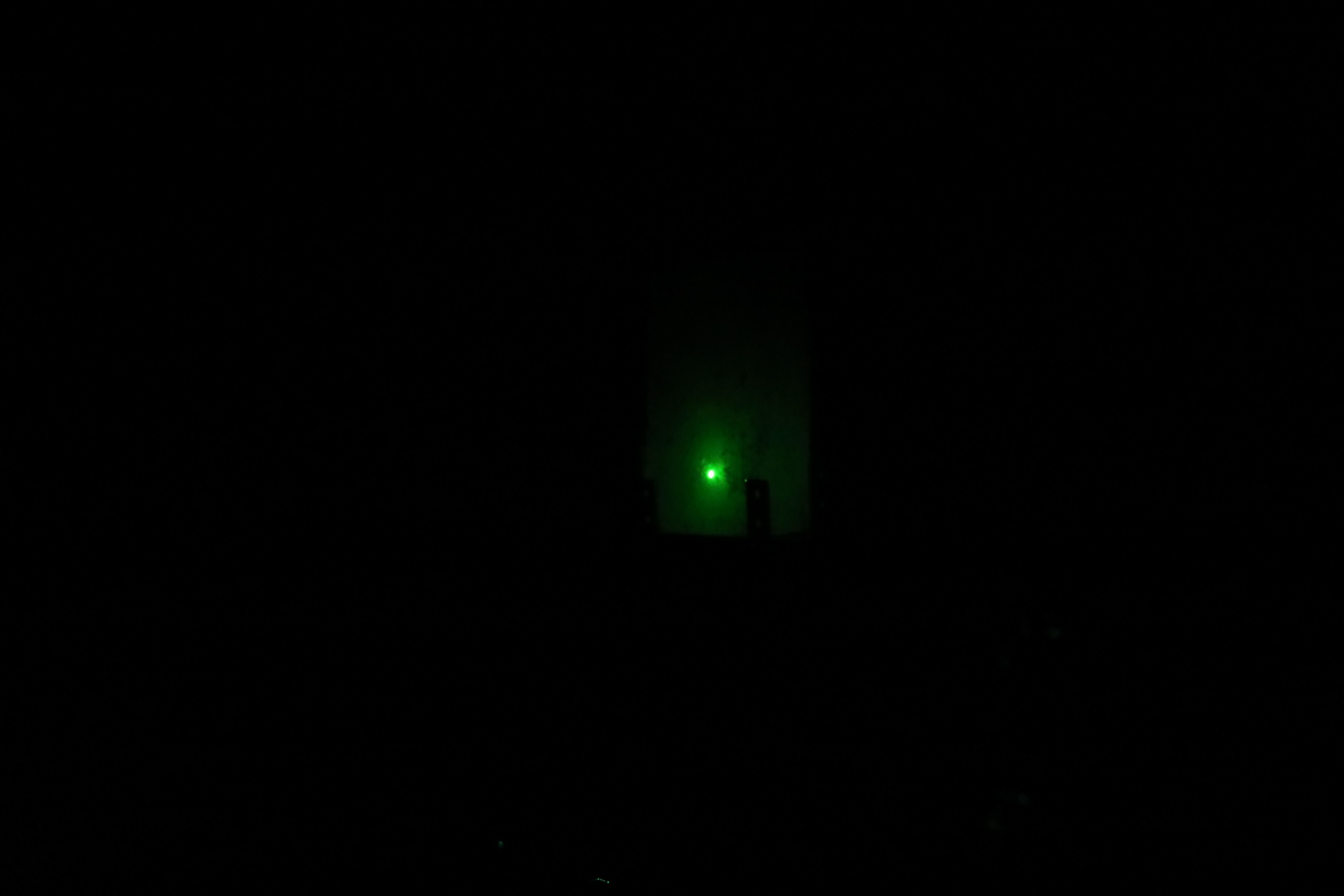
|
The BSSxDF measurement platform.

Measurement principle
BSSRDF Data
8 New results
8.1 Analysis and Simulation
8.1.1 Interactive Exploration of Vivid Material Iridescence using Bragg Mirrors
Participants: Gary Fourneau, Romain Pacanowski, Pascal Barla.
Many animals, plants or gems exhibit iridescent material appearance in nature. These are due to specific geometric structures at scales comparable to visible wavelengths, yielding so‐called structural colors. The most vivid examples are due to photonic crystals, where a same structure is repeated in one, two or three dimensions, augmenting the magnitude and complexity of interference effects. In this work 11, we study the appearance of 1D photonic crystals (repetitive pairs of thin films), also called Bragg mirrors. Previous work has considered the effect of multiple thin films using the classical transfer matrix approach, which increases in complexity when the number of repetitions increases. Our first contribution is to introduce a more efficient closed‐form reflectance formula for Bragg mirror reflectance to the Graphics community, as well as an approximation that lends itself to efficient spectral integration for RGB rendering. We then explore the appearance of stacks made of rough Bragg layers (Figure 13). Here our contribution is to show that they may lead to a ballistic transmission, significantly speeding up position‐free rendering and leading to an efficient single‐reflection BRDF model.
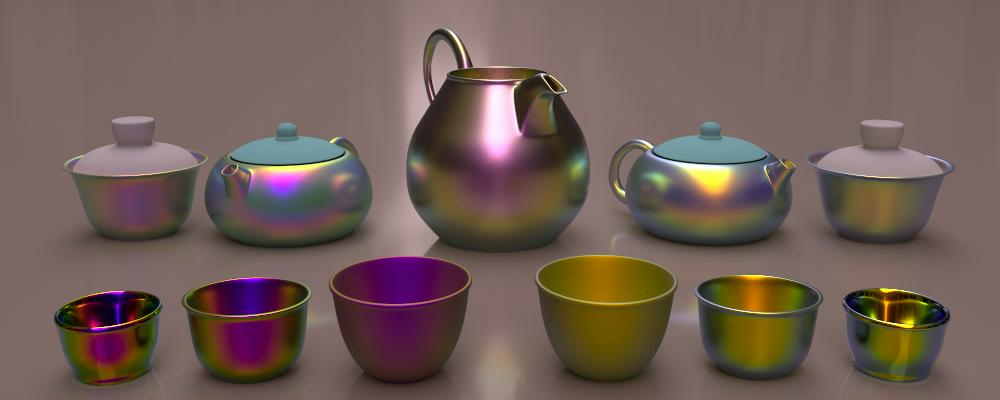
Rendering of layered Bragg structures
8.2 From Acquisition to Display
8.2.1 Imaging device to measure the reflective and transmissive part of isotropic BSSRDF
Participants: Morgane Gerardin, Mathias Paulin, Romain Pacanowski.
The bidirectional scattering-surface reflectance distribution function (BSSRDF) is a fundamental scattering quantity that characterizes the appearance of translucent materials. The few existing BSSRDF measurement facilities that ensure traceable results have shown the high complexity of such measurement, while only accounting for light scattered in the reflection hemisphere. In the article 12, we present an imaging device for measuring both the reflective and the transmissive part of the spectral BSSRDF (see Figure 11). The complete analysis of the uncertainties associated with the facility allows relative measurement errors of around 10%. The measurements performed on two translucent samples and primary comparisons with metrological measurements are provided and discussed.

|

|

|
The BSSxDF measurement platform.
8.2.2 Supercontinuum laser-based gonio-scatterometer for in and out-of-plane spectral BRDF measurements
Participants: François Margall [Onera], Gérald Lemineur [Onera], Romain Pacanowski, Sébastien Mavromatis [Aix-Marseille Université], Eric Coiro [Onera], Alain Le Goff [DGA], Romain Celato [Onera].
The hyperspectral component of bidirectional reflectance measurements, namely from several hundred wavelengths upwards, is attracting growing interest for numerous applications in both optics and computer graphics. In this paper 15, we present a motorized hyperspectral bidirectional reflectance measurement bench that performs in-plane and out-of-plane measurements for isotropic materials using a supercontinuum laser covering the visible and near infrared range, with a sub-nanometer spectral accuracy. We describe the complete data processing chain, including a method for assessing the alignment error of the measurement bench. From these measurements, we verify the principles of non-negativity, energy conservation and Helmholtz reciprocity. We introduce criteria also to evaluate the validity of the Lambertian hypothesis for the bidirectional reflectance and its deviation from reciprocity, obtained from the measurements directly. We show the need for spectral bidirectional reflectance measurements for certain materials, rejecting the separable function approximation.
8.2.3 3D Remote Monitoring and Diagnosis during a Pandemic: Holoportation and Digital Twin Requirements
Participants: Kabir Ahmed Rufai [Monash University], Jim Smiley [Monash University], Patrick Reuter, Chris Bain [Monash University], Peter Chan [Eastern Health], Ens Barrett [University of British Columbia], Helen Purchase [Monash University].
We conducted a requirements analysis for the development of a 3D remote patient monitoring and diagnosis platform, by using a user-centric design methodology 8. We implemented two digital twin visualization prototypes for probing clinicians' insights, the first one using a mixed-reality headset, and the second one using a 3D light field display. The outcome was the emergence of refined clinicians' requirements to guide the implementation of the Digital Twin concept paired with holoportation for remote 3D monitoring and diagnosis of patients.
8.3 Rendering, Visualization and Illustration
8.3.1 A Fully-correlated Anisotropic Micrograin BSDF Model
Participants: Simon Lucas, Mickaël Ribardière [Université de Poitiers], Romain Pacanowski, Pascal Barla.
We introduce an improved version of the micrograin BSDF model 71 for the rendering of anisotropic porous layers. Our approach 14 leverages the properties of micrograins to take into account the correlation between their height and normal, as well as the correlation between the light and view directions. This allows us to derive an exact analytical expression for the Geometrical Attenuation Factor (GAF), summarizing shadowing and masking inside the porous layer. This fully-correlated GAF is then used to define appropriate mixing weights to blend the BSDFs of the porous and base layers (Figure 15). Furthermore, by generalizing the micrograins shape to anisotropy, combined with their fully-correlated GAF, our improved BSDF model produces effects specific to porous layers such as retro-reflection visible on dust layers at grazing angles or height and color correlation that can be found on rusty materials. Finally, we demonstrate very close matches between our BSDF model and light transport simulations realized with explicit instances of micrograins, thus validating our model.
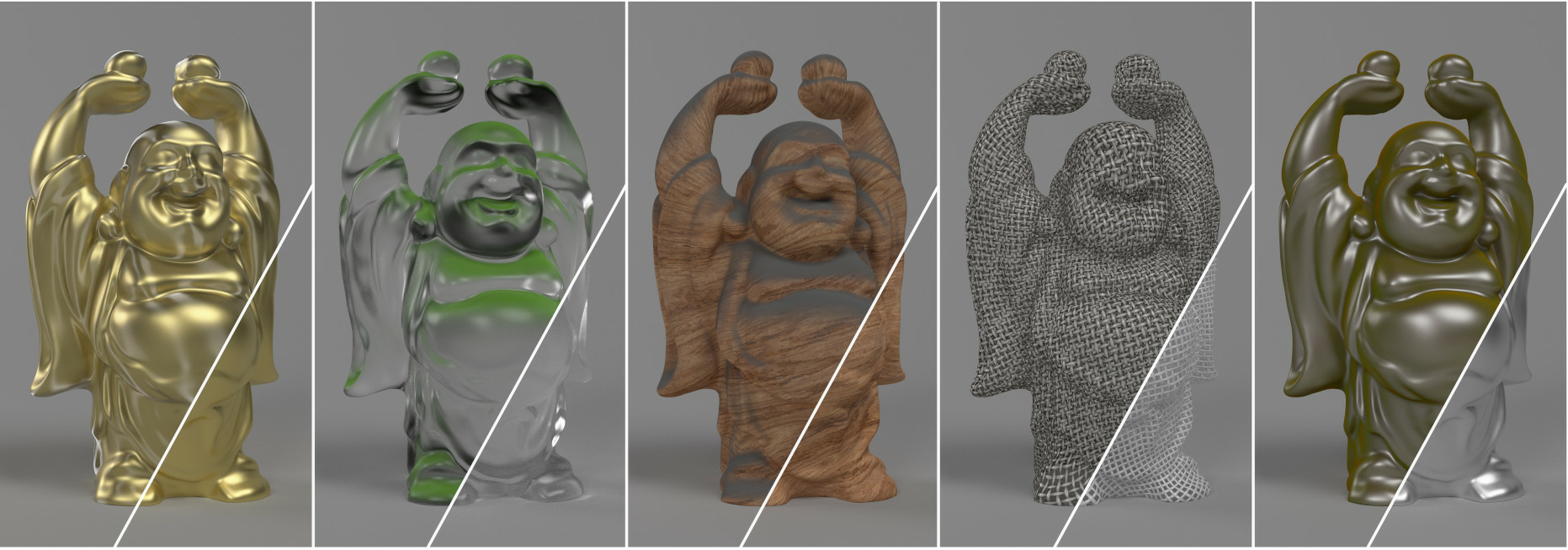
Fully-correlated micrograin BSDF model
8.3.2 Non-Orthogonal Reduction for Rendering Fluorescent Materials in Non-Spectral Engines
Participants: Alban Fichet [Intel, Grenoble], Laurent Belcour [Intel, Grenoble], Pascal Barla.
We propose a method to accurately handle fluorescence in a non-spectral (e.g., tristimulus) rendering engine, showcasing color-shifting and increased luminance effects (Figure 16). Core to our method 10 is a principled reduction technique that encodes the re-radiation into a low-dimensional matrix working in the space of the renderer’s Color Matching Functions (CMFs). Our process is independent of a specific CMF set and allows for the addition of a non-visible ultraviolet band during light transport. Our representation visually matches full spectral light transport for measured fluorescent materials even for challenging illuminants.
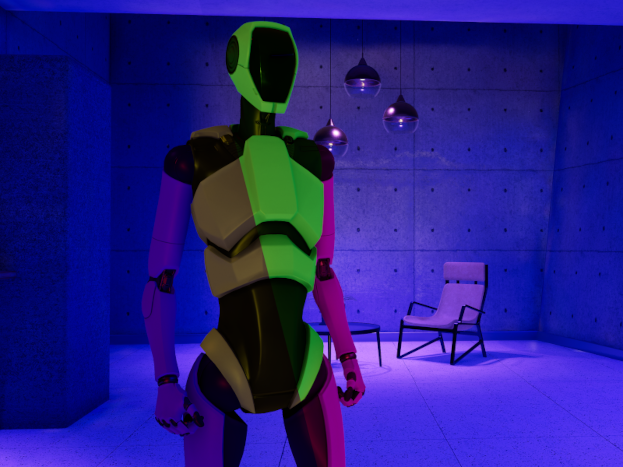
Rendering fluorescent materials in non-spectral engines.
8.3.3 Patch Decomposition for Efficient Mesh Contours Extraction
Participants: Panagiotis Tsiakpolis, Pierre Bénard.
Object-space occluding contours of triangular meshes (a.k.a. mesh contours) are at the core of many methods in computer graphics and computational geometry. A number of hierarchical data-structures have been proposed to accelerate their computation on the CPU, but they do not map well to the GPU for real-time applications, such as video games. We show in 17 that a simple, flat data-structure composed of patches bounded by a normal cone and a bounding sphere may reach this goal, provided it is constructed to maximize the probability for a patch to be culled over all viewpoints (Figure 17). We derive a heuristic metric to efficiently estimate this probability, and present a greedy, bottom-up algorithm that constructs patches by grouping mesh edges according to this metric. In addition, we propose an effective way of computing their bounding sphere. We demonstrate through extensive experiments that this data-structure achieves similar performance as the state-of-the-art on the CPU but is also perfectly adapted to the GPU, leading to up to x5 speedups.
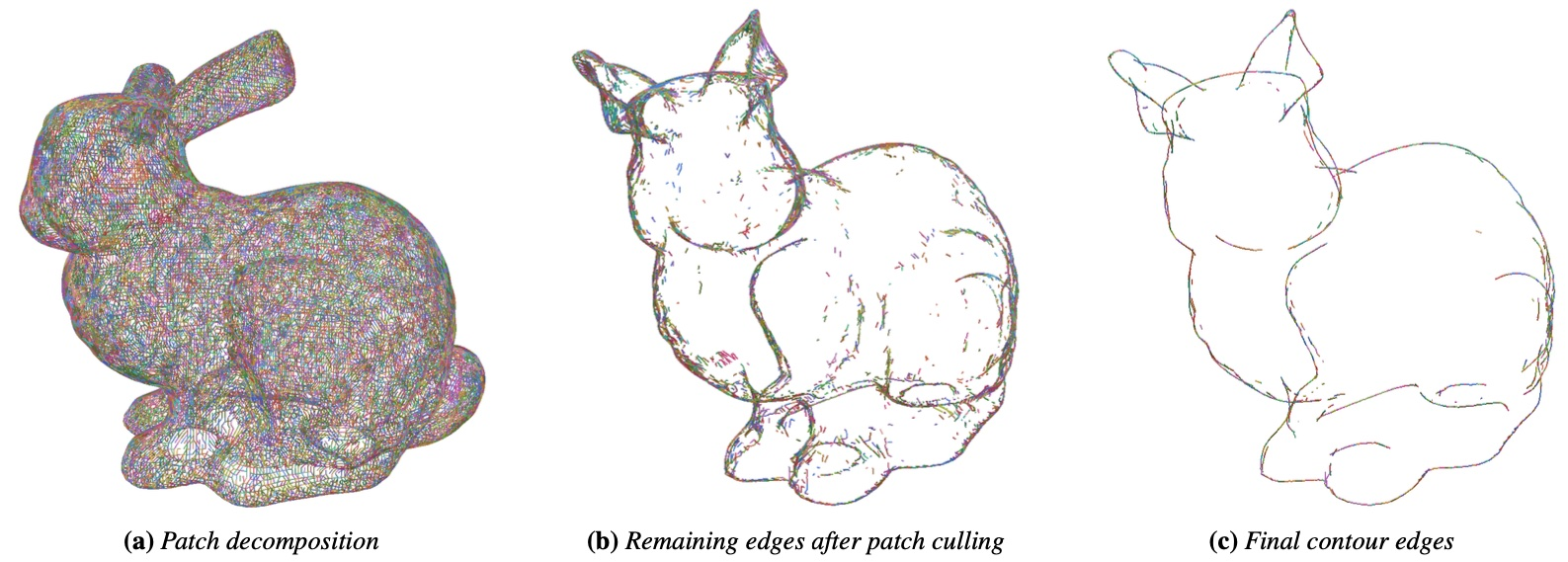
Patch decomposition for mesh contour extraction
8.3.4 Tailoring the visual appearance with disordered metasurfaces
Participants: Miao Chen [LP2N - CNRS], Tong Wu [LP2N - CNRS], Yuhao Xu [LP2N - CNRS], Mona Tréguer-Delapierre [ICMB - CNRS], Glenna L. Drisko [ICMB - CNRS], Kevin Vynck [ILM - CNRS], Romain Pacanowski, Philippe Lalanne [LP2N - CNRS].
Following our previous results 7, we propose a new application 9 of metasurfaces, namely the harnessing of the visual appearance. We demonstrate that disordered metasurfaces composed of high-index resonant metaatoms, once deposited on macroscopic objects, offer visual appearances with novel visual properties.
8.4 Editing and Modeling
8.4.1 Inbetweening with Occlusions for Non-Linear Rough 2D Animation
Participants: Melvin Even, Pierre Bénard, Pascal Barla.
Representing 3D motion and depth through 2D animated drawings is a notoriously difficult task, requiring time and expertise when done by hand. Artists must pay particular attention to occlusions and how they evolve through time, a tedious process. Computer-assisted inbetweening methods such as cut-out animation tools allow for such occlusions to be handled beforehand using a 2D rig, at the expense of flexibility and artistic expression. In this work 26, we extend the flexible 2D animation framework of Even et al. 50 to handle occlusions. We do so by retaining three key properties of their system that are crucial to speed-up the animation process: input rough drawings, real-time preview, and non-linear animation editing. Our contribution is two-fold: a fast method to compute 2D masks from rough drawings with a semi-automatic dynamic layout system for occlusions between drawing parts; and an artist-friendly method to both automatically and manually control the dynamic visibility of strokes for self-occlusions. Such controls are not available in any traditional 2D animation software especially with rough drawings. Our system helps artists produce convincing 3D-like 2D animations (Figure 18), including head turns, foreshortening effects, out-of-plane rotations, overlapping volumes and even transparency.
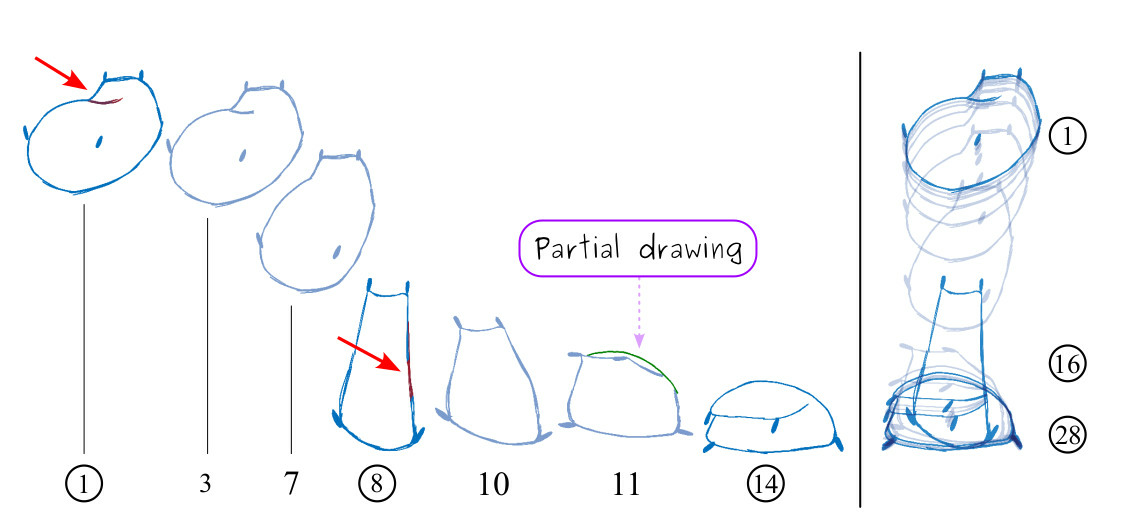
Flour sack animation produced with our rough 2D animation system
8.4.2 SMEAR: Stylized Motion Exaggeration with ARt-direction
Participants: Jean Basset, Pierre Bénard, Pascal Barla.
Smear frames are routinely used by artists for the expressive depiction of motion in animations. In this work 20, we present an automatic, yet art-directable method for the generation of smear frames in 3D, with a focus on elongated in-betweens where an object is stretched along its trajectory. It takes as input a key-framed animation of a 3D mesh, and outputs a deformed version of this mesh for each frame of the animation, while providing for artistic refinement at the end of the animation process and prior to rendering. Our approach works in two steps. We first compute spatially and temporally coherent motion offsets that describe to which extent parts of the input mesh should be leading in front or trailing behind. We then describe a framework to stylize these motion offsets in order to produce elongated in-betweens at interactive rates, which we extend to the other two common smear frame effects: multiple in-betweens and motion lines (see Figure 19). Novice users may rely on preset stylization functions for fast and easy prototyping, while more complex custom-made stylization functions may be designed by experienced artists through our geometry node implementation in Blender. The tool presented in this paper is available as an open-source Blender add-on. This project and future directions were also presented at the conference Vision & Depiction 23.

3D jumping animation stylized with smear frames created with our method (elongated in-betweens, motion lines, multiple in-betweens)
8.5 Modeling environnemental impacts of digitization
8.5.1 Energy consumption of data transfer: Intensity indicators versus absolute estimates
Participants: Gaël Guennebaud, Aurélie Bugeau [Université de Bordeaux, LaBRI].
The assessment of energy consumption of data traffic for Internet services usually relies on energy intensity figures (in Wh/GB). In this work 13, we argue against using these indicators for evaluating the evolution of energy consumption of data transmission induced by changes in Internet usage. We describe a model that estimates global impacts for different scenarios of Internet usages and technological hypothesises, and show that it can overcome some limitations of intensity indicators. We experiment the model on four use-cases: basic usage, video streaming, large downloads, and video conferencing. Results show that increasing the resolution of videos does increase the total energy consumption while misleadingly decreasing the power intensity indicator at the same time. In other words, a more efficient network does not necessarily mean less energy consumption. Our model is publicly available as a web application illustrated in Figure 20.
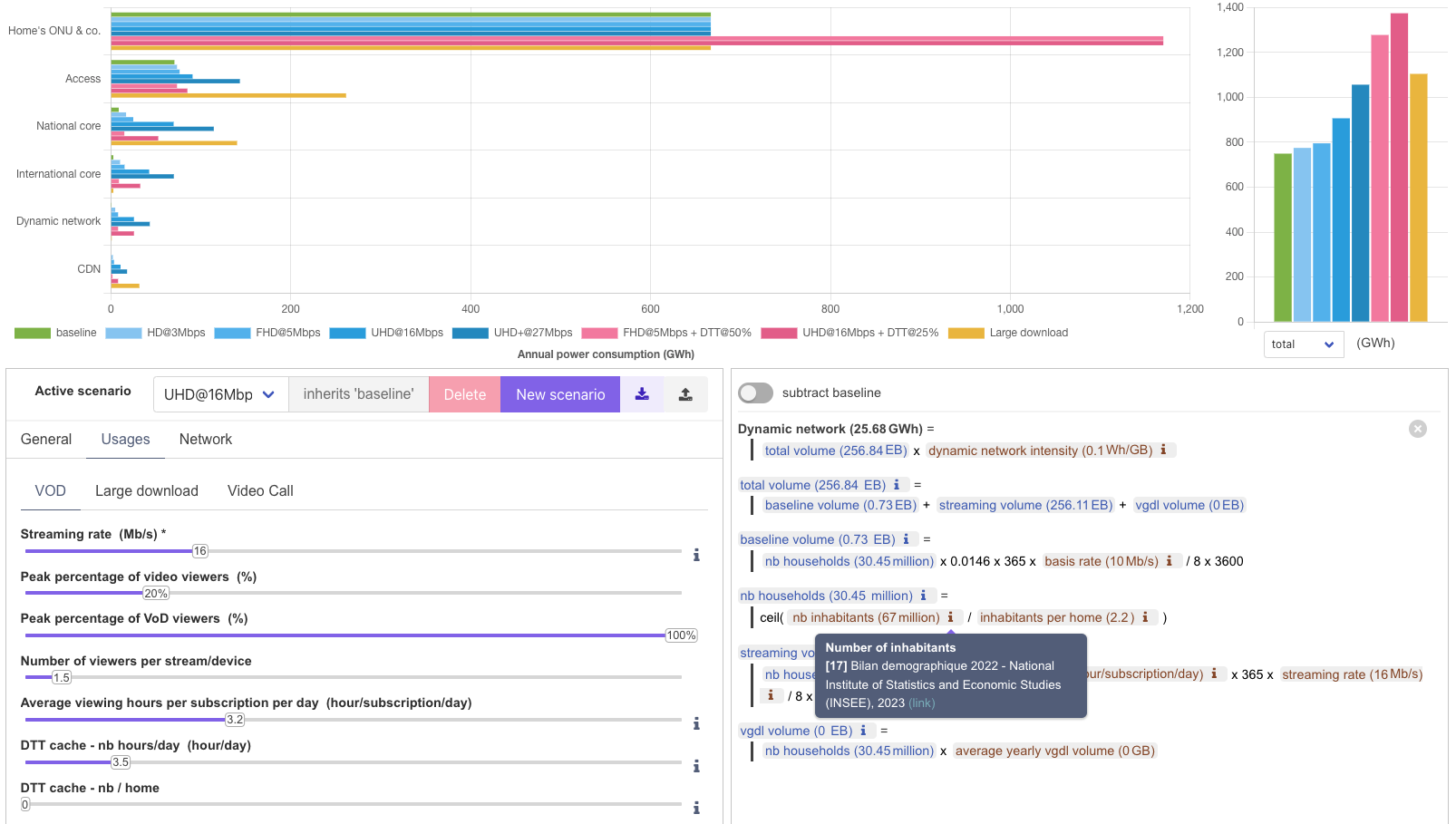
Parametric network model for streaming applications
8.5.2 Estimating The Carbon Footprint Of Digital Agriculture Deployment: A Parametric Bottom-Up Modelling Approach
Participants: Pierre La Rocca, Gaël Guennebaud, Aurélie Bugeau [Université de Bordeaux, LaBRI].
Digitalization appears as a lever to enhance agriculture sustainability. However, existing works on digital agriculture's own sustainability remain scarce, disregarding the environmental effects of deploying digital devices on a large-scale. In this work 16, we propose a bottom-up method to estimate the carbon footprint of digital agriculture scenarios considering deployment of devices over a diversity of farm sizes. It is applied to two use-cases and demonstrates that digital agriculture encompasses a diversity of devices with heterogeneous carbon footprints and that more complex devices yield higher footprints not always compensated by better performances or scaling gains. By emphasizing the necessity of considering the multiplicity of devices, and the territorial distribution of farm sizes when modelling digital agriculture deployments, this study highlights the need for further exploration of the first-order effects of digital technologies in agriculture.
8.5.3 Controversed projects for their ecological consequences? A systematic analysis, conviviality and democratic processes
Participants: Nicolas Berger [IUT de Bordeaux, LaBRI], Aurélie Bugeau [Université de Bordeaux, LaBRI], Olivier Gauwin [IUT de Bordeaux], Gaël Guennebaud, Stéphanie Mariette [Inrae, BioGeCo].
Construction and land development projects go through several stages before, during and after completion. Each of these stages has different socio-environmental consequences and involves different stakeholders with different points of view. Consultation processes, economic and socio-environmental impact studies are put in place, particularly upstream of the project, to inform decision-making. However, the documents produced are generally complex to analyze, and do not transparently transcribe the authorities' decision on whether or not to accept the project. The aim of this work that has been presented at the Controversies study day on "controversial knowledge in the context of climate change" organized by SciencePo 22 is to analyze and question the processes leading to the decision to locate controversial projects or infrastructures, and to propose an analysis grid providing a global and transparent view of the benefits-risks of projects. We have experimented the method on a local project of giant solar plant.
9 Bilateral contracts and grants with industry
9.1 Bilateral contracts with industry
Research collaboration contract with Praxinos (2021-2025)
Participants: Melvin Even, Pierre Bénard, Pascal Barla.
This collaboration aims at defining new computer-assisted tools to facilitate the creation of 2D animations.
CIFRE PhD contract with Ubisoft (2022-2025)
Participants: Panagiotis Tsiapkolis, Pierre Bénard.
In this project, we aim at exploring artistic control in real-time stylized rendering of 3D scenes.
10 Partnerships and cooperations
10.1 International initiatives
10.1.1 Visits to international teams
Research stays abroad
Participants: Patrick Reuter.
-
Visited institution:
University of Queensland (Human-Centred Computing team)
-
Country:
Australia
-
Dates:
July 2024 - August 2024
-
Type of mobility:
research stay
The objective of this research stay is to continue the collaboration with the University of Queensland and explore interactive machine learning approaches for geometry processing.
10.2 National initiatives
10.2.1 ANR
“Young Researcher” MoStyle (2021-2025)
- INRIA - LaBRI
Participants: Pierre Bénard, Pascal Barla, Melvin Even.
The main goal of this project is to investigate how computer tools can help capturing and reproducing the typicality of traditional 2D animations. Ultimately, this would allow to produce 2D animations with a unified appearance starting from roughs drawings or 3D inputs.
10.2.2 Inria Exploratory actions
Exploratory Action Ecoptics (2021-2024)
- INRIA
Participants: Gary Fourneau, Pascal Barla, Romain Pacanowski.
The main topic of this project is to contribute to the understanding of visual communication among animals. It explores new computer graphics techniques Il se propose de déveloper de nouvelles techniques de synthèse d'images afin de combler le fossé qui sépare les approches optique et écologique, connectant ainsi le transport lumineux dans des structures microscopiques à la surface d'un animal, aux signaux visuels perceptibles par un autre animal dans son habitat.
10.3 Regional initiatives
Vespaa (2022-2027)
- INRIA and Region Nouvelle Aquitaine
Participants: Romain Pacanowski, Pierre Bénard, Pascal Barla, Gaël Guennebaud, Pierre Mézière.
The project VESPAA focuses on high-fidelity rendering of African artifacts stored in different museums (Angoulême, La Rochelle, Bordeaux) of the Nouvelle Aquitaine Region.
The main goals of VESPAA are:
- To improve the quality of measurements data acquired by La Coupole in order to represent complex materials (gilding, pearl, patina and varnish)
- To develop new SV-BRDF models and multi-resolution representations to visualize in real-time and with high fidelity the digitized objects under dynamic light and view directions. The targeted audience ranges from Cultural Heritage experts to mainstream public visiting the museums.
- To make durable the acquired reflectance properties by storing the measurements (geometry and tabulated data) as well as the SV-BRDF models (Source Code) in a open database.
11 Dissemination
11.1 Promoting scientific activities
11.1.1 Scientific events: organisation
Member of the conference program committees
- Eurographics 2025: Pascal Barla
- Eurographics Short Papers 2024: Pierre Bénard
- Eurographics Symposium on Rendering 2024: Pierre Bénard
- I3D 2024: Romain Pacanowski
- Eurographics Workshop on Graphics and Cultural Heritage 2024: Patrick Reuter
Reviewer
- Siggraph 2024: Pascal Barla, Pierre Bénard, Romain Pacanowski
- Siggraph Asia 2024: Pascal Barla, Pierre Bénard
- Eurographics 2025: Jean Basset
- I3D 2024: Romain Pacanowski (Best Reviewer Award)
- Eurographics Workshop on Graphics and Cultural Heritage 2024: Patrick Reuter
11.1.2 Journal
Reviewer - reviewing activities
- Computer & Graphics: Pierre Bénard
- Journal of Industrial Ecology: Gaël Guenneabud
11.1.3 Invited talks
- "Stylisation du mouvement et animation 2D", Pierre Bénard & Fabrice Debarge (Praxinos), Rencontres Animation Développement Innovation (20/11/2024) 19.
11.1.4 Scientific expertise
- Active participation of Gaël Guennebaud in the production of the AFNOR SPEC 2314 "Référentiel général pour l'IA frugale - Mesurer et réduire l'impact environnemental de l'IA".
- Gaël Guennebaud is providing expertize within a working group of TheShiftProject on the role and impact of technologies within low GHG emission and resilient agricultural scenarios.
11.2 Teaching - Supervision - Juries
11.2.1 Teaching
The members of our team are involved in teaching computer science at University of Bordeaux and ENSEIRB-Matmeca engineering School. General computer science is concerned, as well as the following graphics related topics:
- Master: Pierre Bénard, Gaël Guennebaud, Romain Pacanowski, Advanced Image Synthesis, 50 HETD, M2, Univ. Bordeaux, France.
- Master: Gaël Guennebaud, Pierre Bénard and Jean Basset, 3D Worlds, 60 HETD, M1, Univ. Bordeaux and IOGS, France.
- Master: Jean Basset, Virtual Reality, 20 HETD, M2, Univ. Bordeaux, France.
- Master: Romain Pacanowski, 3D Programming, M2, 18 HETD, Bordeaux INP ENSEIRB Matmeca, France.
- Licence: Gaël Guennebaud and Pierre La Rocca, Introduction to climate change issues and the environnemental impacts of ICT, 24 HETD, L3, Univ. Bordeaux, France.
- Licence: Patrick Reuter, Deep Learning, 32 HETD, L3, Univ. Bordeaux, France.
One member is also in charge of a field of study:
- Master: Pierre Bénard, M2 “Informatique pour l'Image et le Son”, Univ. Bordeaux, France.
11.2.2 Supervision
Engineers
- Jérémie Ettedgui: supervised by Romain Pacanowski
- Louis De Oliveira: supervised by Romain Pacanowski
PostDoc fellows
- Jean Basset: supervised by Pierre Bénard, Pascal Barla.
- Pierre Mézières: supervised by Pierre Bénard and Romain Pacanowski
PhD students
- Julien Castets: "Engineering disorder in surfaces to create novel appearance" R. Pacanowski and G. Drisko (ICMB - CNRS)
- Louis Forestier: "Rendu de l'apparence de surfaces nanostructurées ; création de nouveaux effets visuels". R. Pacanowski and P. Lalanne (LP2N - CNRS)
- Simon Lucas: "Modélisation de l'apparence et rendu des plantes", Inria & Univ. Bordeaux, P. Barla, R. Pacanowski.
- Gary Fourneau: "Modélisation de l'Apparence Visuelle pour l'Écologie Comportementale", Inria & Univ. Bordeaux, P. Barla, R. Pacanowski.
- Melvin Even: "Computer-Aided Rough 2D Animation", Inria & Univ. Bordeaux, P. Barla, P. Bénard.
- Panagiotis Tsiakpolis: "Study of Artistic Control in Real-Time Expressive Rendering”, Inria & Ubisoft, P. Bénard.
- Pierre La Rocca: "Modélisation paramétrique des impacts environnementaux des TIC : focus sur la numérisation de l'agriculture.", Univ. Bordeaux, Aurélie Bugeau, G. Guennebaud.
- Léa Marquet: "Empreinte carbone de la recherche scientifique : typologie, déterminants et compromis", Inrae & Inria, Tamara Ben Ari, Valentin Bellassen, Gaël Guennebaud, David Makowski
- Bastien Morel: supervised by Pascal Barla, with Clément Moulin-Frier (FLOWERS team).
Master students
- Bastien Morel: supervised by Pascal Barla, with Clément Moulin-Frier (FLOWERS team).
- Yanis Dubois: supervised by Pascal Barla and Romain Pacanowski
- Christina Jeandes: supervised by Pascal Barla, Jean Basset.
- Marwane Youssoufi: supervised by Romain Pacanowski
- Mathieu Nass: supervised by Gaël Guennebaud
11.2.3 Juries
PhD as supervisors:
- Simon Lucas (06/12/2024): Pascal Barla, Romain Pacanowski.
- Gary Fourneau (18/12/2024): Pascal Barla, Romain Pacanowski.
- Melvin Even (20/12/2024): Pascal Barla, Pierre Bénard.
PhD as examiner:
- Thibault Simon (06/12/2024): Gaël Guennebaud
11.3 Popularization
11.3.1 Productions (articles, videos, podcasts, serious games, ...)
- "Que sait-on des impacts environnementaux de la vidéo en ligne ? L'exemple de Netflix", TheConversation (May 2024), Gaël Guennebaud (with Aurélie Bugeau and Benjamin Ninassi)
- "« L'envers des mots » : Frugalité", TheConversation (june 2024), Gaël Guennebaud (with Denis Trystram, Aurélie Bugeau, Emmanuelle Frenoux, Ligozat Anne-Laure)
11.3.2 Participation in Live events
- Secondary school visits: "1 scientifique, 1 classe : chiche !", Pierre Bénard, Lycée des Graves (14/11/2024) and Lycée Victor Louis (02/12/2024).
- Exchanges and encounters between the public and scientists: "Nuit de la recherche" (27/09/2024), Jean Basset
11.3.3 Interventions
- Invited talk: "Empreinte carbone des heures de calculs - Contexte, méthode, et retours d'expérience", Gaël Guennebaud, Ecoinfo, march 2024
- Invited talk and expertise: "Quelques clefs pour appréhender les impacts environnementaux du numérique", Gaël Guennebaud, COS RSE INRAE, may 2024.
- Invited talk: "Quelques clefs pour appréhender les enjeux environnementaux du numérique", Séminaire "sobriété numérique", Gaël Guennebaud, IRIT-LAAS-CNRS, october 2024
12 Scientific production
12.1 Major publications
- 1 articleA Practical Extension to Microfacet Theory for the Modeling of Varying Iridescence.ACM Transactions on Graphics364July 2017, 65HALDOI
- 2 articleAutostereoscopic transparent display using a wedge light guide and a holographic optical element: implementation and results.Applied optics5834November 2019HALDOI
- 3 articleA Two-Scale Microfacet Reflectance Model Combining Reflection and Diffraction.ACM Transactions on Graphics364Article 66July 2017, 12HALDOI
- 4 articleA View-Dependent Metric for Patch-Based LOD Generation & Selection.Proceedings of the ACM on Computer Graphics and Interactive Techniques11May 2018HALDOI
- 5 articleInstant Transport Maps on 2D Grids.ACM Transactions on Graphics376November 2018, 13HALDOI
- 6 articleMaterial category of visual objects computed from specular image structure.Nature Human Behaviour77July 2023, 1152-1169HALDOI
- 7 articleThe visual appearances of disordered optical metasurfaces.Nature Materials21May 2022, 1035-1041HALDOIback to text
12.2 Publications of the year
International journals
National journals
Invited conferences
International peer-reviewed conferences
Conferences without proceedings
Doctoral dissertations and habilitation theses
Reports & preprints
Other scientific publications
12.3 Cited publications
- 29 articleReliefs as images.ACM Trans. Graph.2942010, URL: http://doi.acm.org/10.1145/1778765.1778797DOIback to text
- 30 articleSurface Relief Analysis for Illustrative Shading.Computer Graphics Forum314June 2012, 1481-1490URL: http://hal.inria.fr/hal-00709492DOIback to textback to text
- 31 techreportDistribution-based BRDFs.unpublishedUniv. of Utah2007back to text
- 32 articleTime-resolved 3D Capture of Non-stationary Gas Flows.ACM Trans. Graph.2752008back to text
- 33 bookSpatial Augmented Reality: Merging Real and Virtual Worlds.A K Peters/CRC Press2005back to textback to text
- 34 articleOptimizing Environment Maps for Material Depiction.Comput. Graph. Forum (Proceedings of the Eurographics Symposium on Rendering)3042011, URL: http://www-sop.inria.fr/reves/Basilic/2011/BCRA11back to text
- 35 articleLeast Squares Subdivision Surfaces.Comput. Graph. Forum2972010, 2021-2028URL: http://hal.inria.fr/inria-00524555/enback to text
- 36 articleStyle Transfer Functions for Illustrative Volume Rendering.Comput. Graph. Forum2632007, 715-724URL: http://www.cg.tuwien.ac.at/research/publications/2007/bruckner-2007-STF/back to text
- 37 inproceedingsUnstructured lumigraph rendering.Proc. ACM SIGGRAPH2001, 425-432URL: http://doi.acm.org/10.1145/383259.383309DOIback to text
- 38 articleApplication of radial basis functions to shape description in a dual-element off-axis eyewear display: Field-of-view limit.J. Society for Information Display16112008, 1089-1098DOIback to text
- 39 articleA Survey on Participating Media Rendering Techniques.The Visual Computer2005HALback to text
- 40 inproceedingsOn-Line Visualization of Underground Structures using Context Features.Symposium on Virtual Reality Software and Technology (VRST)ACM2010, 167-170URL: http://hal.inria.fr/inria-00524818/enDOIback to text
- 41 articleNon-oriented MLS Gradient Fields.Computer Graphics ForumDecember 2013, URL: http://hal.inria.fr/hal-00857265back to text
- 42 articleLight field transfer: global illumination between real and synthetic objects.ACM Trans. Graph.2732008, URL: http://doi.acm.org/10.1145/1360612.1360656DOIback to textback to textback to textback to text
- 43 articleA novel approach makes higher order wavelets really efficient for radiosity.Comput. Graph. Forum1932000, 99-108back to text
- 44 articleA quantized-diffusion model for rendering translucent materials.ACM Trans. Graph.3042011, URL: http://doi.acm.org/10.1145/2010324.1964951DOIback to text
- 45 inproceedingsReflectance and texture of real-world surfaces.IEEE Conference on Computer Vision and Pattern Recognition (ICCV)1997, 151-157back to text
- 46 articleFabricating spatially-varying subsurface scattering.ACM Trans. Graph.2942010, URL: http://doi.acm.org/10.1145/1778765.1778799DOIback to text
- 47 bookAdvanced Global Illumination.A.K. Peters2006back to textback to text
- 48 articleFrequency analysis and sheared filtering for shadow light fields of complex occluders.ACM Trans. Graph.3022011, URL: http://doi.acm.org/10.1145/1944846.1944849DOIback to text
- 49 articleFrequency Analysis and Sheared Reconstruction for Rendering Motion Blur.ACM Trans. Graph.2832009, URL: http://hal.inria.fr/inria-00388461/enDOIback to textback to textback to text
- 50 articleNon-linear Rough 2D Animation using Transient Embeddings.Computer Graphics ForumMain: 15 pages, 19 figures. Supplementary: 2 pages. Submitted to Eurographics.May 2023HALDOIback to text
- 51 articleSpecular reflections and the perception of shape.J. Vis.492004, 798-820URL: http://journalofvision.org/4/9/10/back to text
- 52 inproceedingsBRDF Acquisition with Basis Illumination.IEEE International Conference on Computer Vision (ICCV)2007, 1-8back to text
- 53 articleAccurate Light Source Acquisition and Rendering.ACM Trans. Graph.2232003, 621-630URL: http://hal.inria.fr/hal-00308294DOIback to textback to text
- 54 inproceedingsModeling the interaction of light between diffuse surfaces.Proc. ACM SIGGRAPH1984, 213-222back to text
- 55 articlePhysical reproduction of materials with specified subsurface scattering.ACM Trans. Graph.2942010, URL: http://doi.acm.org/10.1145/1778765.1778798DOIback to textback to text
- 56 phdthesisSimulating Global Illumination Using Adaptative Meshing.University of California1991back to text
- 57 articleFluorescent immersion range scanning.ACM Trans. Graph.2732008, URL: http://doi.acm.org/10.1145/1360612.1360686DOIback to text
- 58 articleAcquisition and analysis of bispectral bidirectional reflectance and reradiation distribution functions.ACM Trans. Graph.2942010, URL: http://doi.acm.org/10.1145/1778765.1778834DOIback to text
- 59 articleDynamic Display of BRDFs.Comput. Graph. Forum3022011, 475--483URL: http://dx.doi.org/10.1111/j.1467-8659.2011.01891.xDOIback to textback to textback to textback to text
- 60 articleTransparent and Specular Object Reconstruction.Comput. Graph. Forum2982010, 2400-2426back to text
- 61 inproceedingsA Kaleidoscopic Approach to Surround Geometry and Reflectance Acquisition.IEEE Conf. Computer Vision and Pattern Recognition Workshops (CVPRW)IEEE Computer Society2012, 29-36back to textback to textback to text
- 62 inproceedingsA theory of plenoptic multiplexing.IEEE Conf. Computer Vision and Pattern Recognition (CVPR)\bf oralIEEE Computer Society2010, 483-490back to textback to text
- 63 inproceedingsThe rendering equation.Proc. ACM SIGGRAPH1986, 143-150URL: http://doi.acm.org/10.1145/15922.15902DOIback to textback to text
- 64 inproceedingsFast, arbitrary BRDF shading for low-frequency lighting using spherical harmonics.Proc. Eurographics workshop on Rendering (EGWR)Pisa, Italy2002, 291-296back to text
-
65
articleEdge clustered fitting grids for
-polynomial characterization of freeform optical surfaces.Opt. Express19272011, 26962-26974URL: http://www.opticsexpress.org/abstract.cfm?URI=oe-19-27-26962DOIback to text - 66 articleDemarcating curves for shape illustration.ACM Trans. Graph. (SIGGRAPH Asia)2752008, URL: http://doi.acm.org/10.1145/1409060.1409110DOIback to text
- 67 articleRecording and controlling the 4D light field in a microscope using microlens arrays.J. Microscopy23522009, 144-162URL: http://dx.doi.org/10.1111/j.1365-2818.2009.03195.xDOIback to text
- 68 articlePredicted Virtual Soft Shadow Maps with High Quality Filtering.Comput. Graph. Forum3022011, 493-502URL: http://hal.inria.fr/inria-00566223/enback to text
- 69 articleProgrammable aperture photography: multiplexed light field acquisition.ACM Trans. Graph.2732008, URL: http://doi.acm.org/10.1145/1360612.1360654DOIback to text
- 70 articleOnline Tracking of Outdoor Lighting Variations for Augmented Reality with Moving Cameras.IEEE Transactions on Visualization and Computer Graphics184March 2012, 573-580URL: http://hal.inria.fr/hal-00664943DOIback to textback to text
- 71 inproceedingsA Micrograin BSDF Model for the Rendering of Porous Layers.Siggraph Asia 2023 - The 16th ACM SIGGRAPH Conference and Exhibition on Computer Graphics and Interactive Techniques in AsiaSydney, AustraliaDecember 2023HALDOIback to text
- 72 article3D TV: a scalable system for real-time acquisition, transmission, and autostereoscopic display of dynamic scenes.ACM Trans. Graph.2332004, 814-824URL: http://doi.acm.org/10.1145/1015706.1015805DOIback to textback to textback to text
- 73 articleA data-driven reflectance model.ACM Trans. Graph.2232003, 759-769URL: http://doi.acm.org/10.1145/882262.882343DOIback to text
- 74 inproceedingsAcquisition, Synthesis and Rendering of Bidirectional Texture Functions.Eurographics 2004, State of the Art Reports2004, 69-94back to text
- 75 inproceedingsExperimental Analysis of BRDF Models.Proc. Eurographics Symposium on Rendering (EGSR)2005, 117-226back to text
- 76 bookGeometrical Considerations and Nomenclature for Reflectance.National Bureau of Standards1977back to text
- 77 articleOptical computing for fast light transport analysis.ACM Trans. Graph.2962010back to text
- 78 articleVolumetric Vector-based Representation for Indirect Illumination Caching.J. Computer Science and Technology (JCST)2552010, 925-932URL: http://hal.inria.fr/inria-00505132/enDOIback to text
- 79 articleRational BRDF.IEEE Transactions on Visualization and Computer Graphics1811February 2012, 1824-1835URL: http://hal.inria.fr/hal-00678885DOIback to textback to textback to text
- 80 articleCompressive light transport sensing.ACM Trans. Graph.2812009back to text
- 81 articleMulticamera Real-Time 3D Modeling for Telepresence and Remote Collaboration.Int. J. digital multimedia broadcasting2010Article ID 247108, 12 pages2010, URL: http://hal.inria.fr/inria-00436467DOIback to text
- 82 articleOn the relationship between radiance and irradiance: determining the illumination from images of a convex Lambertian object.J. Opt. Soc. Am. A18102001, 2448-2459back to text
- 83 articleA first-order analysis of lighting, shading, and shadows.ACM Trans. Graph.2612007, URL: http://doi.acm.org/10.1145/1189762.1189764DOIback to textback to textback to text
- 84 bookComputational Photography: Mastering New Techniques for Lenses, Lighting, and Sensors.A K Peters/CRC Press2012back to text
- 85 bookHigh Dynamic Range Imaging: Acquisition, Display and Image-Based Lighting.2nd editionMorgan Kaufmann Publishers2010back to text
- 86 articlePocket reflectometry.ACM Trans. Graph.3042011back to text
- 87 articleArcheoTUI-Driving virtual reassemblies with tangible 3D interaction.J. Computing and Cultural Heritage322010, 1-13URL: http://hal.inria.fr/hal-00523688/enDOIback to text
- 88 articleThe zonal method for calculating light intensities in the presence of a participating medium.ACM SIGGRAPH Comput. Graph.2141987, 293-302URL: http://doi.acm.org/10.1145/37402.37436DOIback to text
- 89 inproceedingsA New Change of Variables for Efficient BRDF Representation.Proc. EGWR '981998, 11-22back to text
- 90 inproceedingsSpherical wavelets: efficiently representing functions on the sphere.Proc. ACM SIGGRAPHannual conference on Computer graphics and interactive techniques1995, 161-172URL: http://doi.acm.org/10.1145/218380.218439back to text
- 91 bookRadiosity and Global Illumination.Morgan Kaufmann Publishers1994back to text
- 92 articleFourier Depth of Field.ACM Transactions on Graphics2822009, URL: http://hal.inria.fr/inria-00345902DOIback to text
- 93 articleEfficient Glossy Global Illumination with Interactive Viewing.Computer Graphics Forum1912000, 13-25back to text
- 94 articleBarycentric Parameterizations for Isotropic BRDFs.IEEE Trans. Vis. and Comp. Graph.1122005, 126-138URL: http://dx.doi.org/10.1109/TVCG.2005.26back to text
- 95 bookVisual Perception from a Computer Graphics Perspective.A K Peters/CRC Press2011back to textback to text
- 96 articleAll-Frequency Precomputed Radiance Transfer Using Spherical Radial Basis Functions and Clustered Tensor Approximation.ACM Trans. Graph.2532006, 967-976back to text
- 97 inproceedingsDynamic Stylized Shading Primitives.Proc. Int. Symposium on Non-Photorealistic Animation and Rendering (NPAR)ACM2011, 99-104URL: http://hal.inria.fr/hal-00617157/enback to textback to text
- 98 articleThe influence of shape on the perception of material reflectance.ACM Trans. Graph.2632007, URL: http://doi.acm.org/10.1145/1276377.1276473DOIback to text
- 99 inproceedingsMetropolis light transport.Proc. SIGGRAPH '97annual conference on Computer graphics and interactive techniquesACM/Addison-Wesley Publishing Co.1997, 65-76URL: http://doi.acm.org/10.1145/258734.258775back to text
- 100 articleSurface Flows for Image-based Shading Design.ACM Trans. Graph.3132012, URL: http://hal.inria.fr/hal-00702280back to textback to text
- 101 articleImproving Shape Depiction under Arbitrary Rendering.IEEE Trans. Visualization and Computer Graphics1782011, 1071-1081URL: http://hal.inria.fr/inria-00585144/enDOIback to textback to textback to text
- 102 articleLight warping for enhanced surface depiction.ACM Trans. Graph.283\it front cover2009, 25:1URL: http://doi.acm.org/10.1145/1531326.1531331DOIback to text
- 103 articleImplicit Brushes for Stylized Line-based Rendering.Comput. Graph. Forum302\bf 3\textsuperscript{rd} best paper award2011, 513-522URL: http://hal.inria.fr/inria-00569958/enDOIback to text
- 104 articleSoft Textured Shadow Volume.Comput. Graph. Forum2842009, 1111-1120URL: http://hal.inria.fr/inria-00390534/enback to text
- 105 articleKernel Nyström method for light transport.ACM Trans. Graph.2832009back to text
- 106 articlePacket-based Hierarchical Soft Shadow Mapping.Comput. Graph. Forum2842009, 1121-1130URL: http://hal.inria.fr/inria-00390541/enback to text


